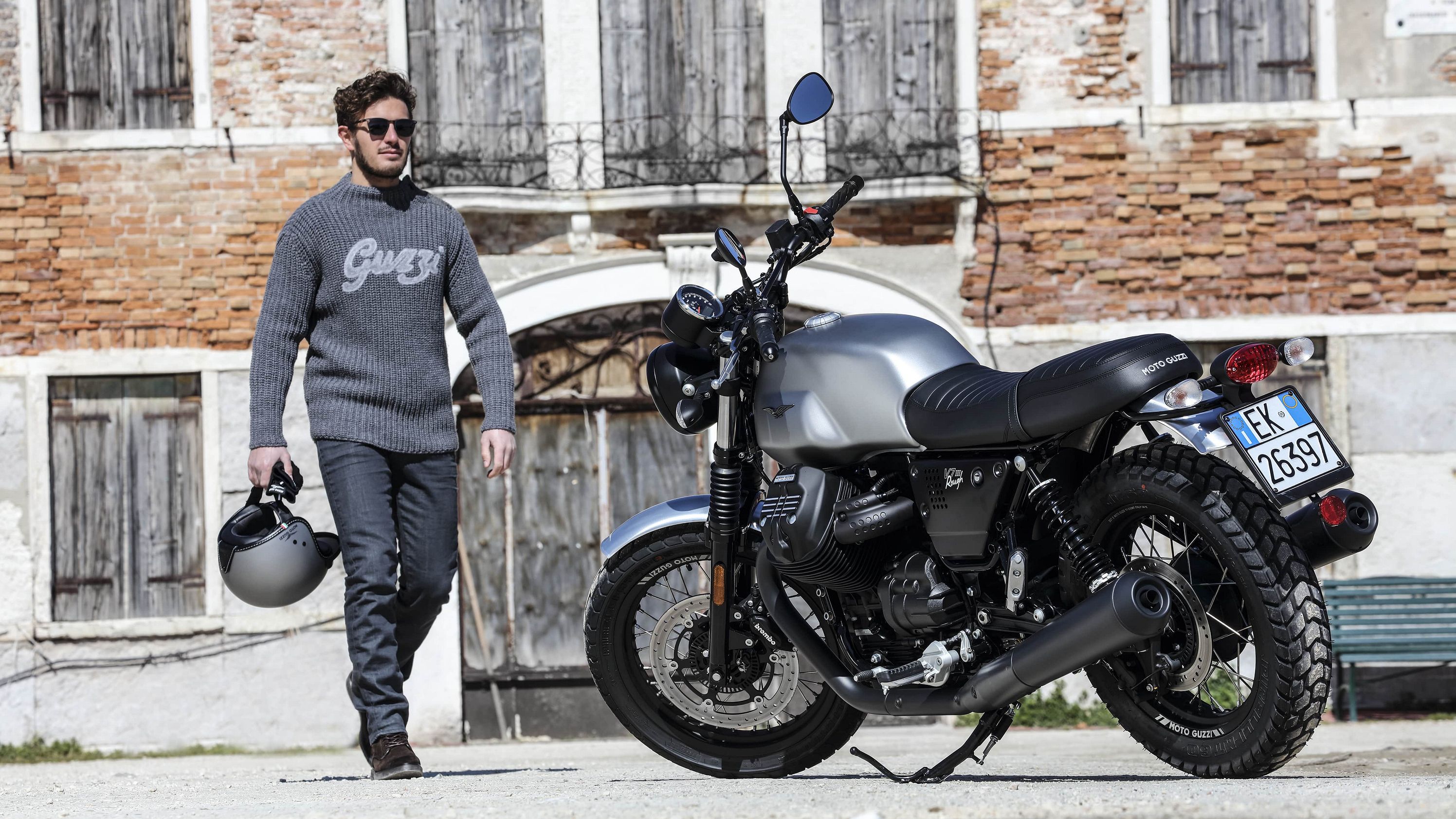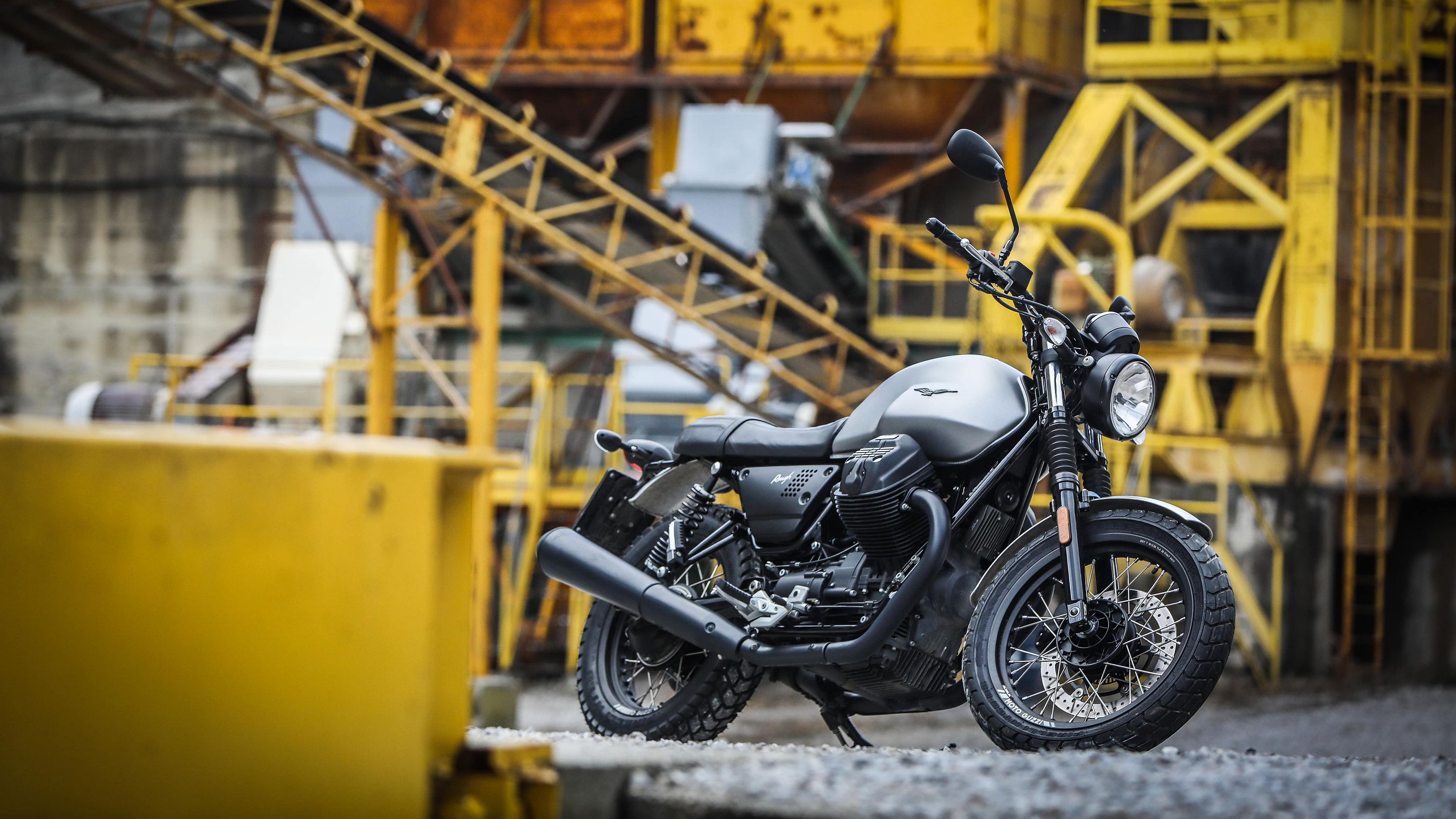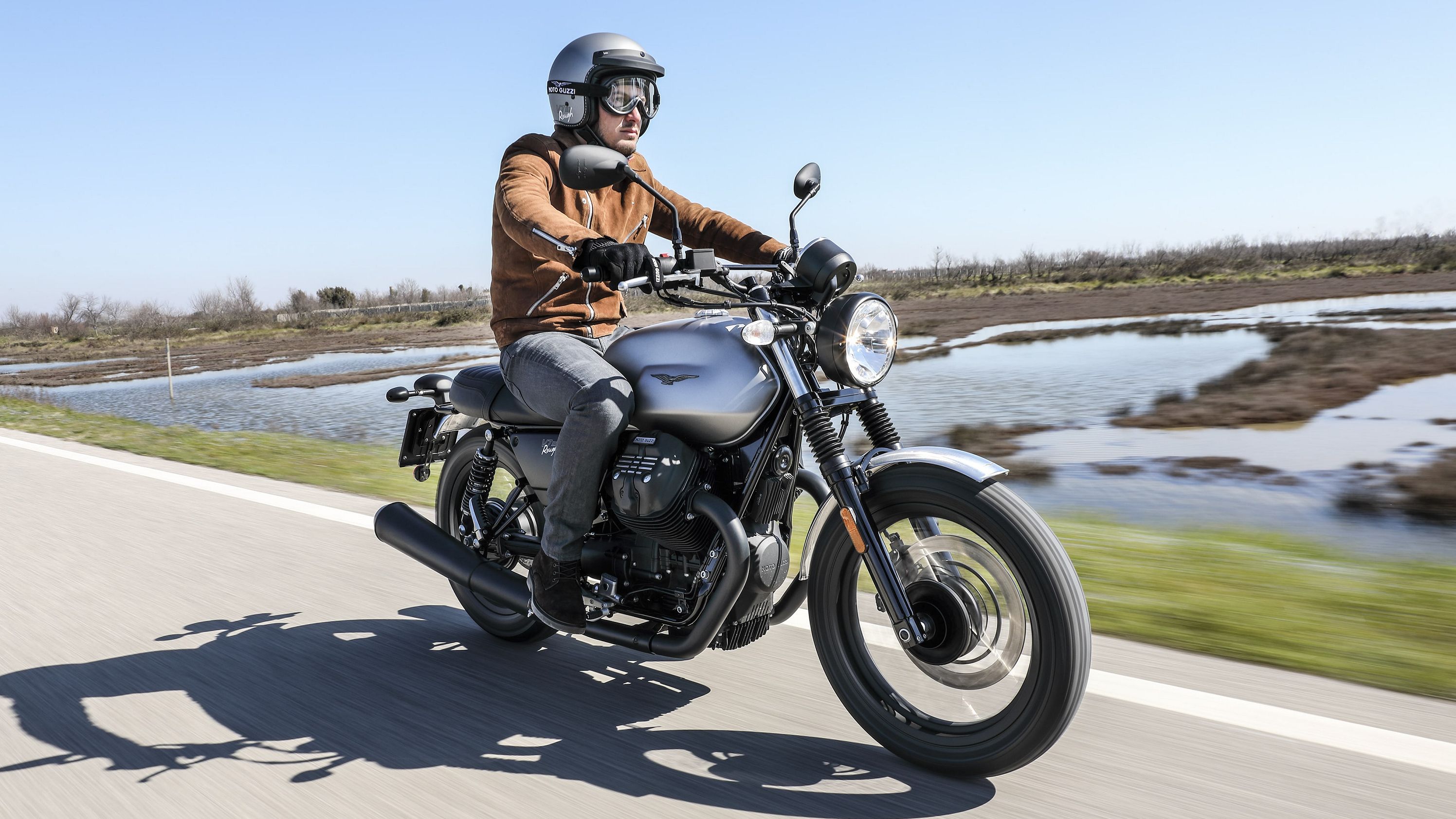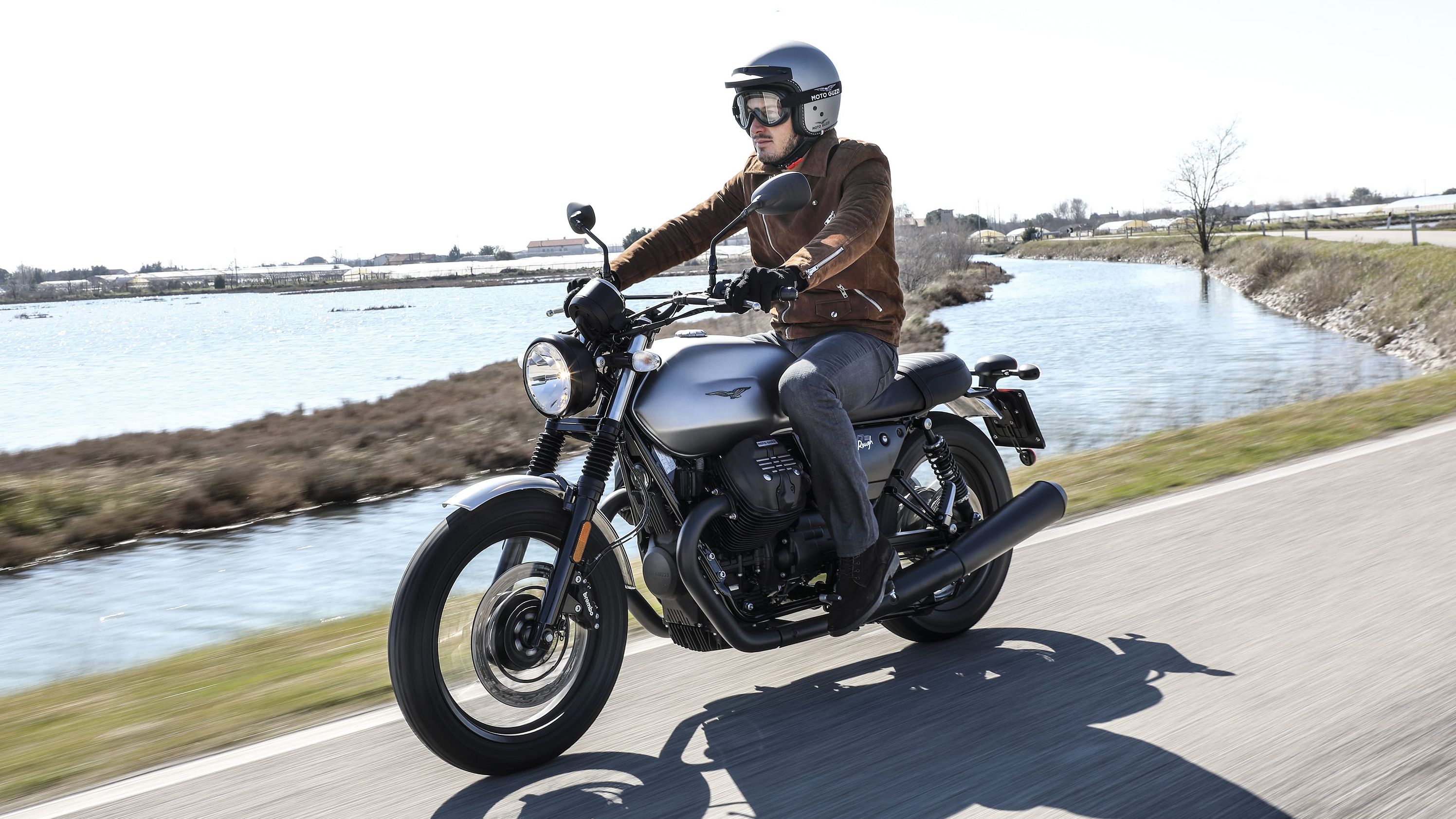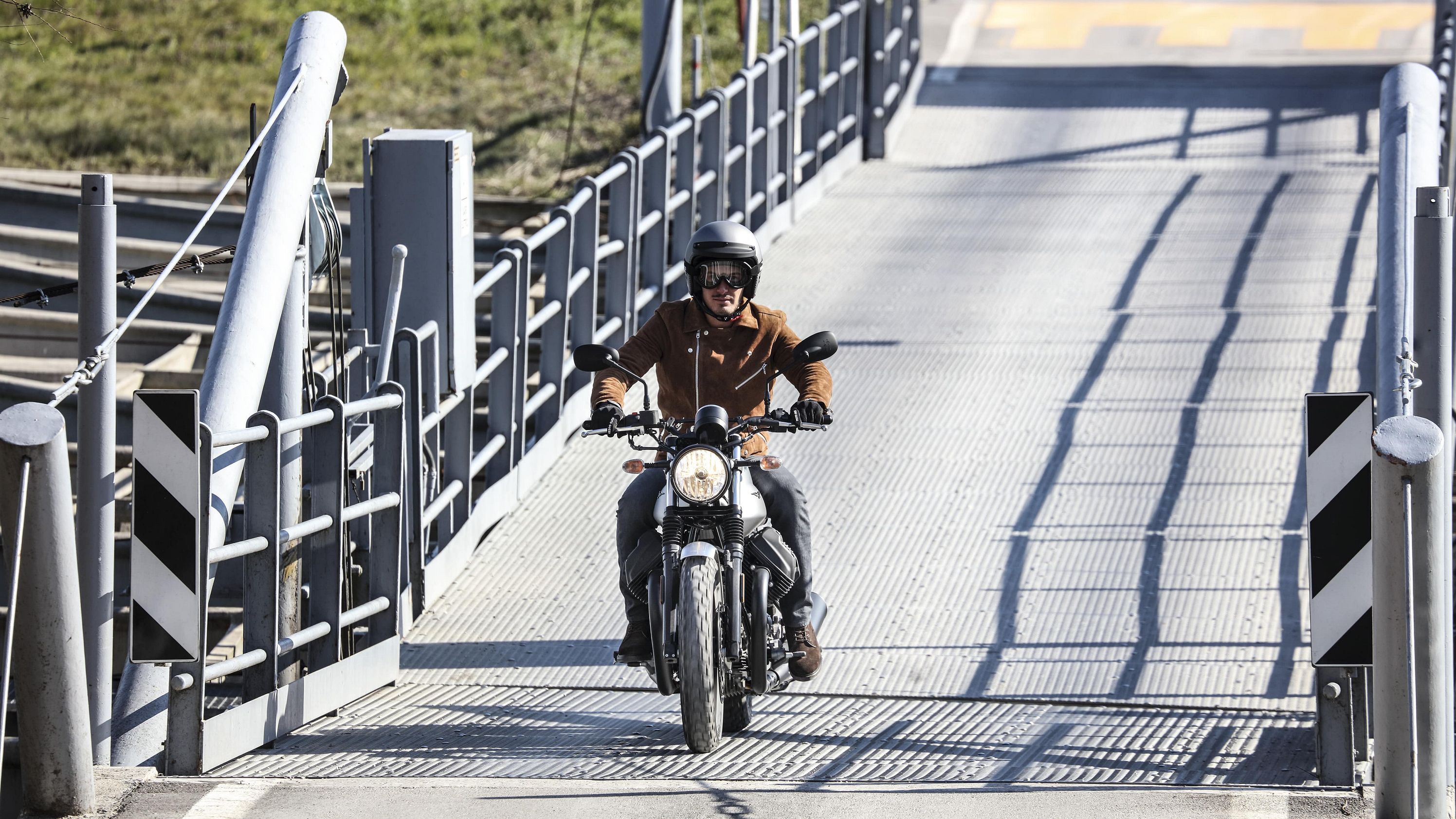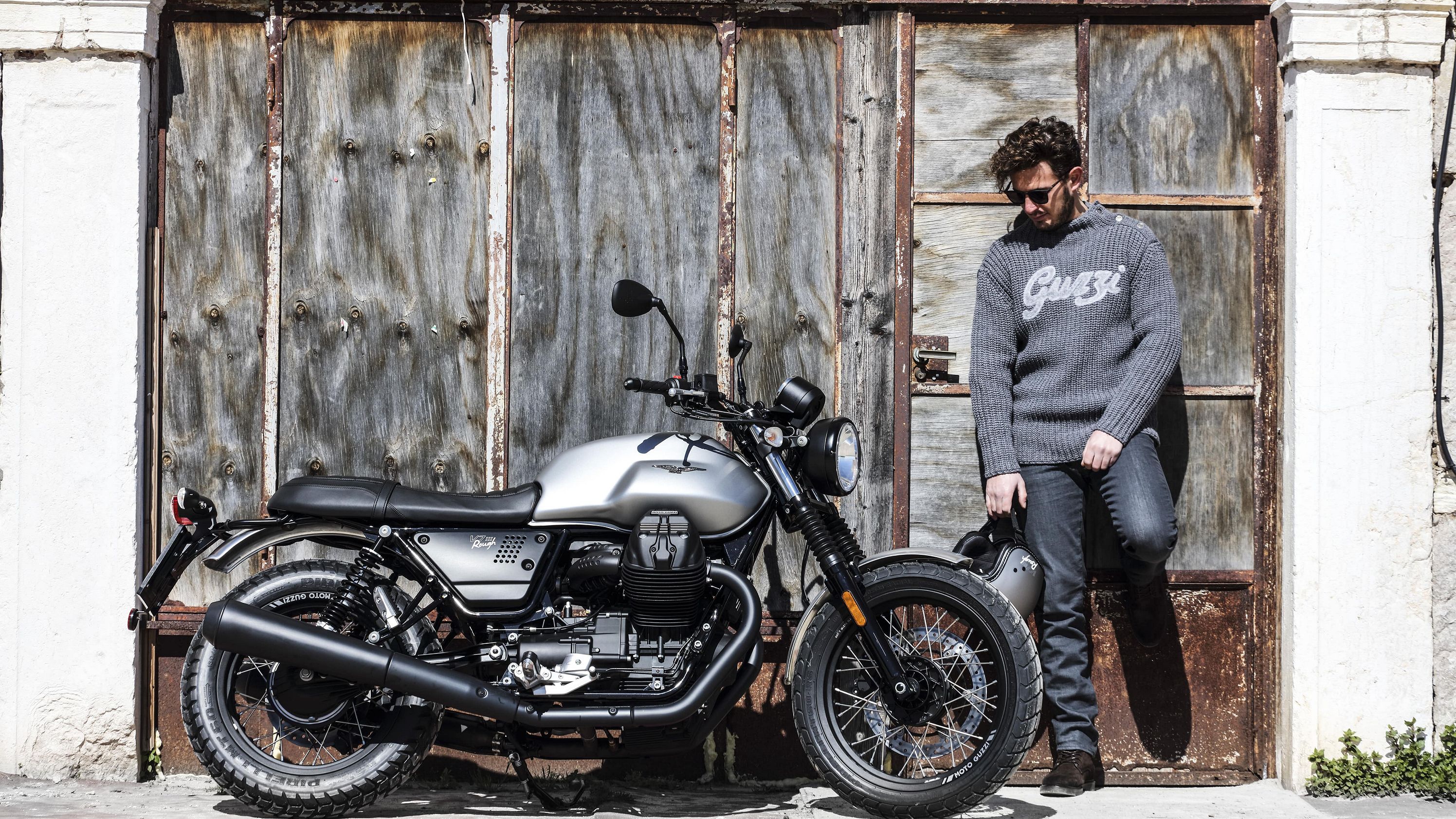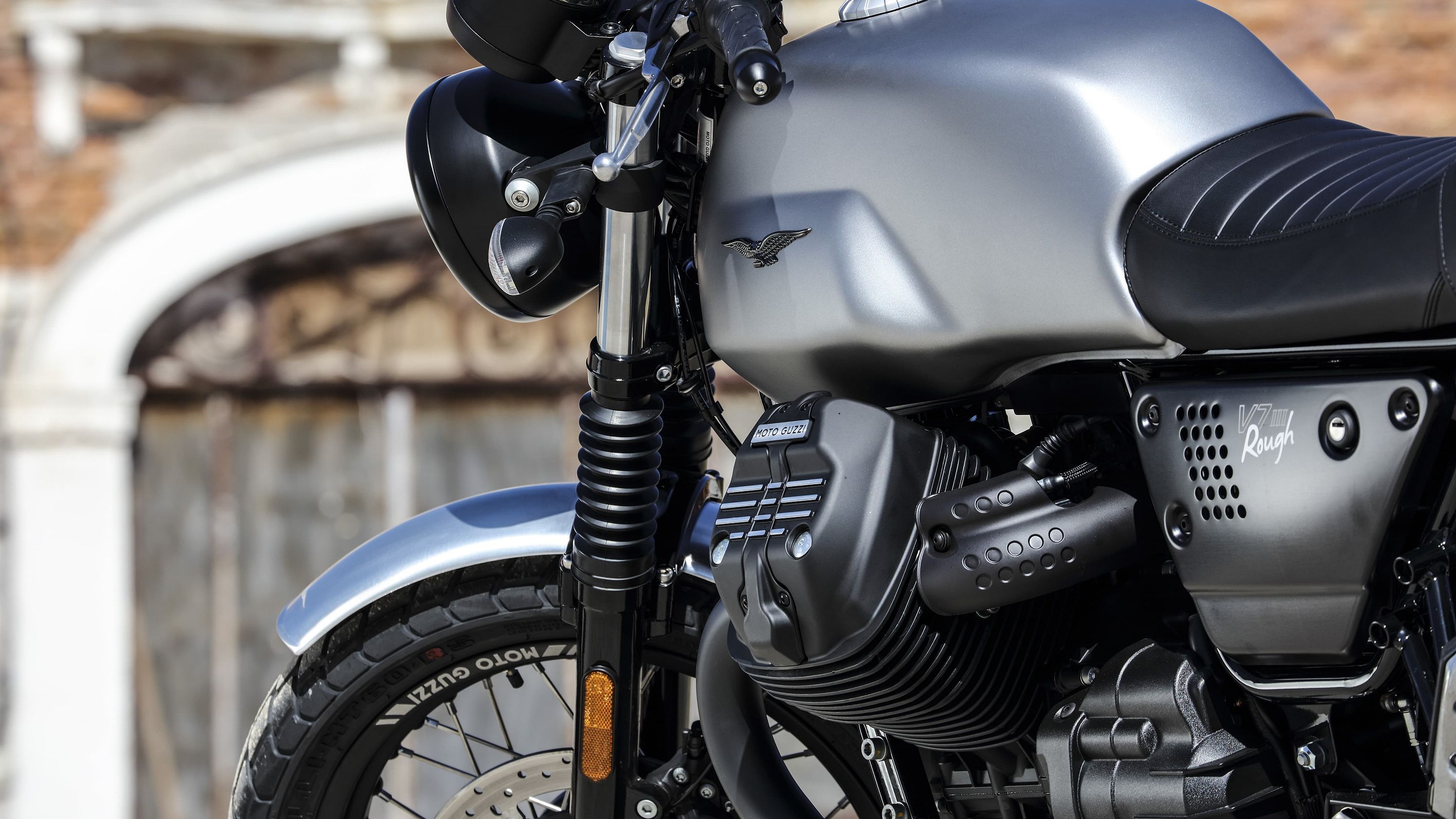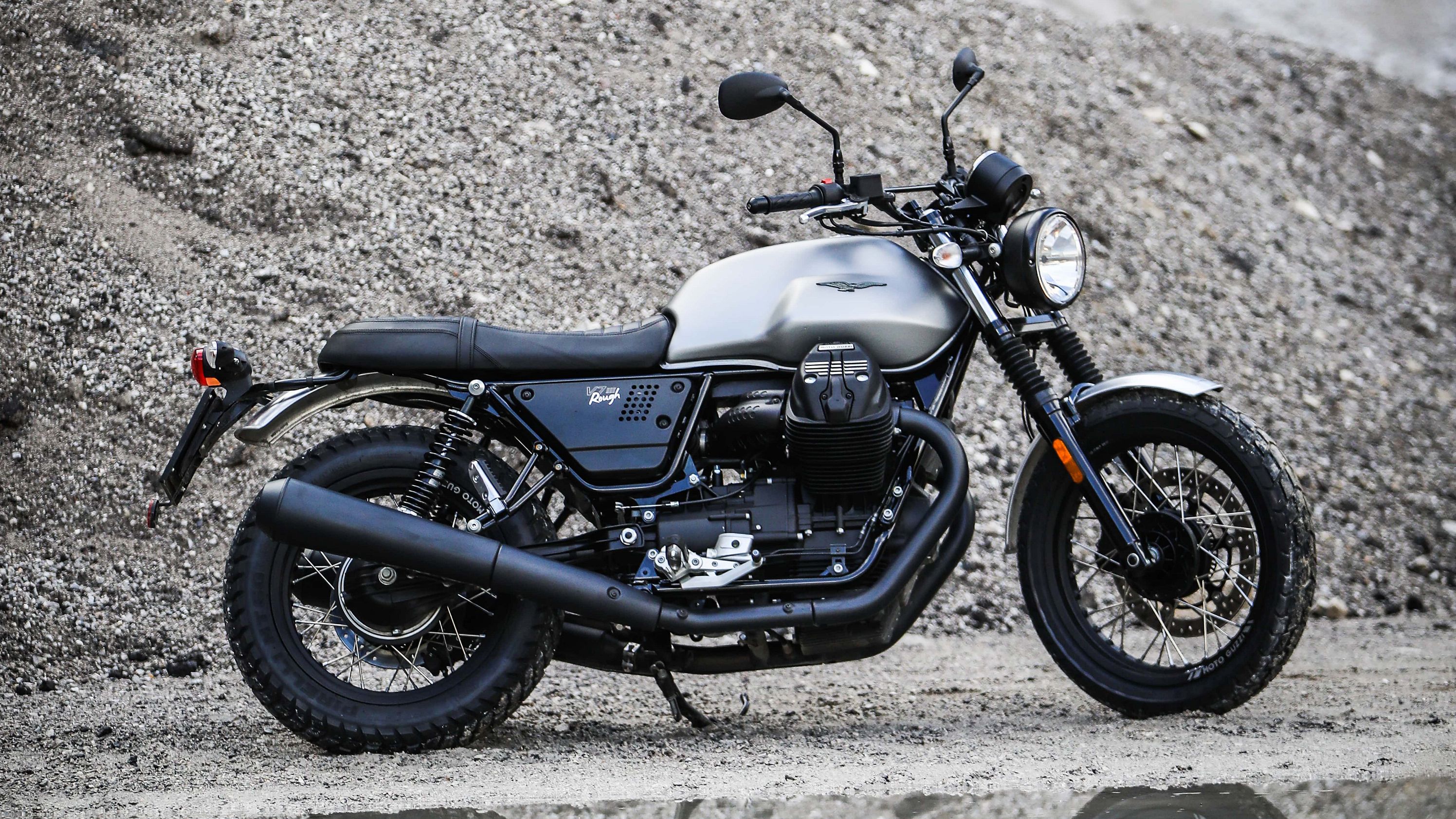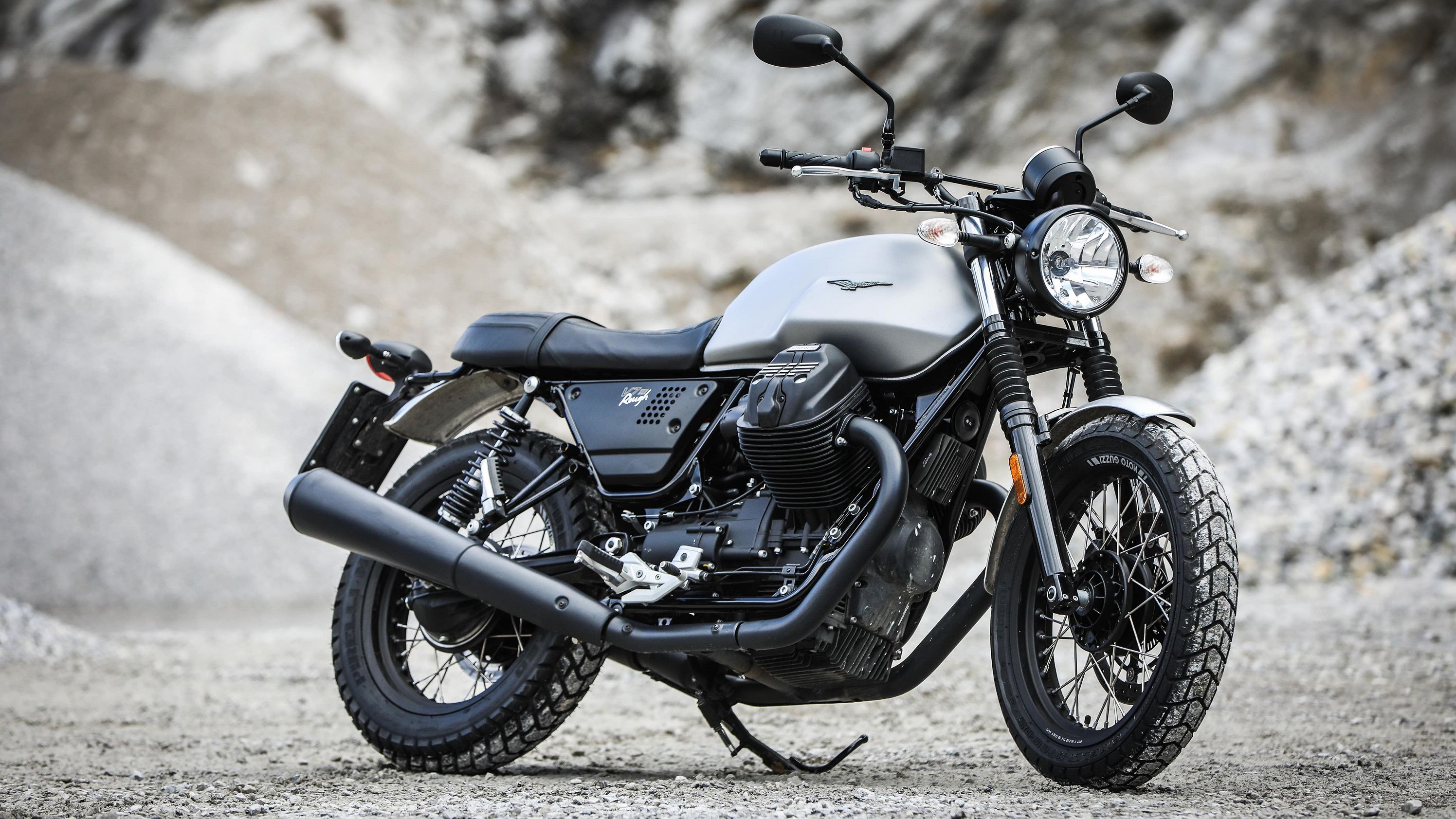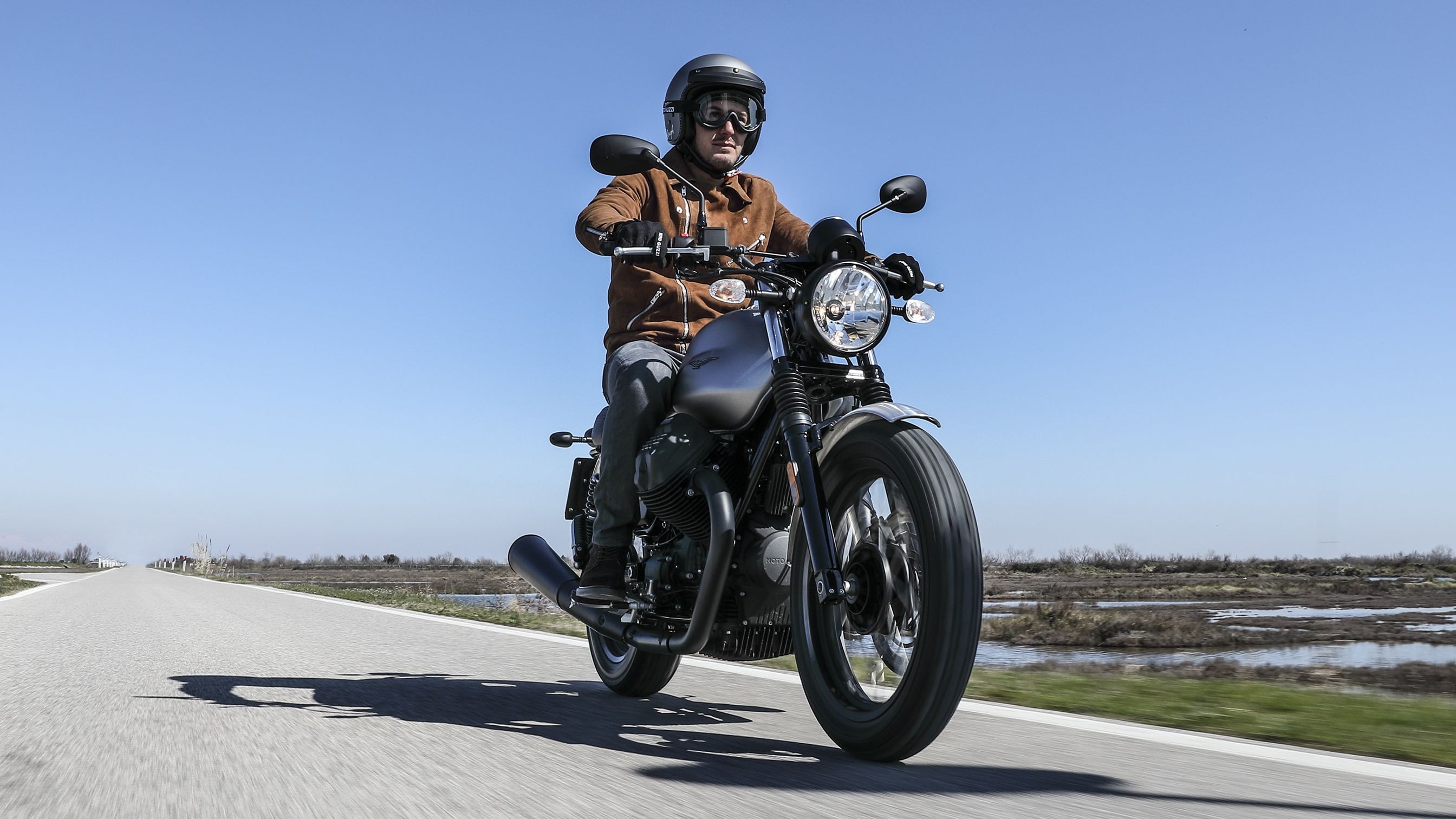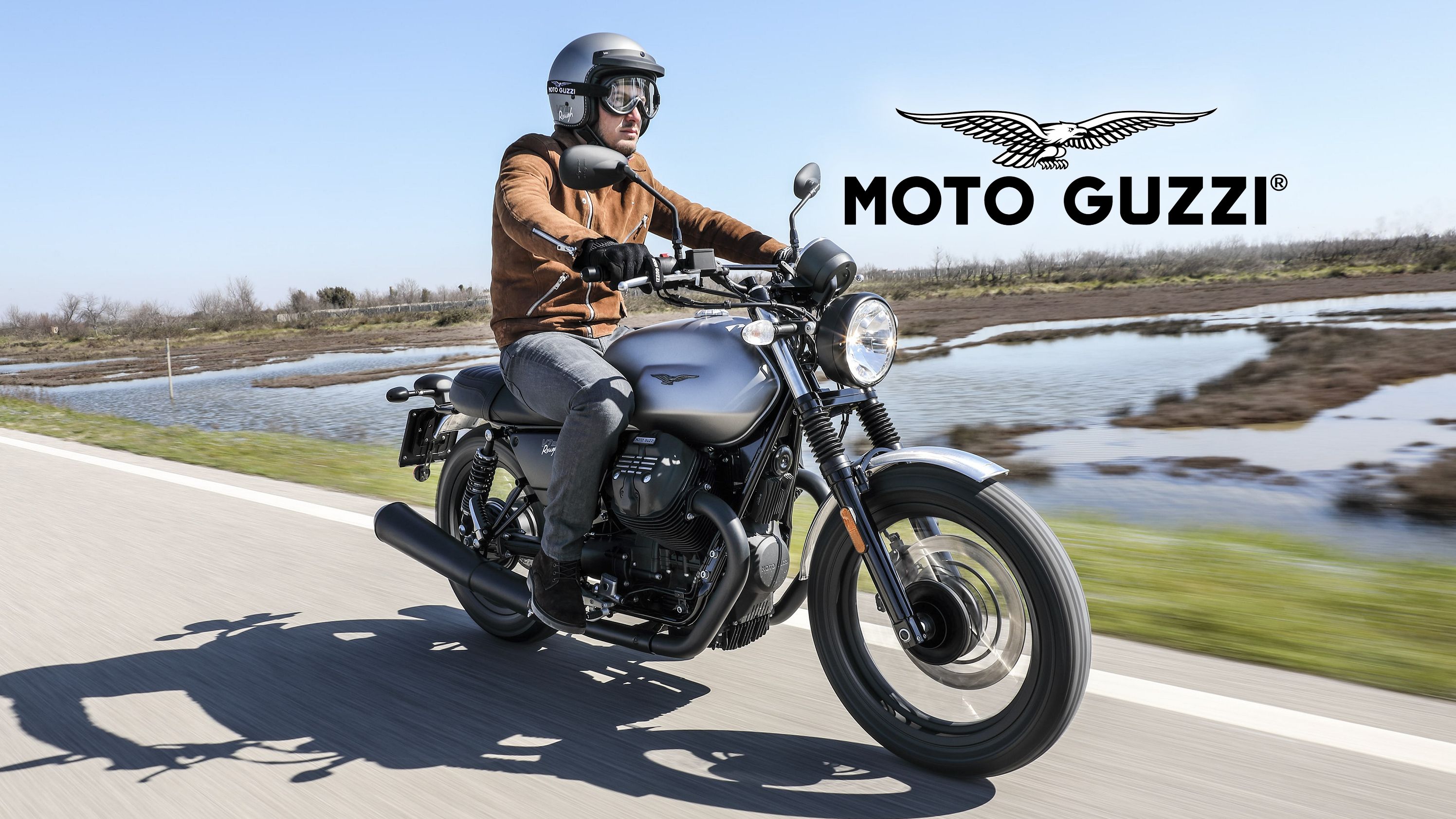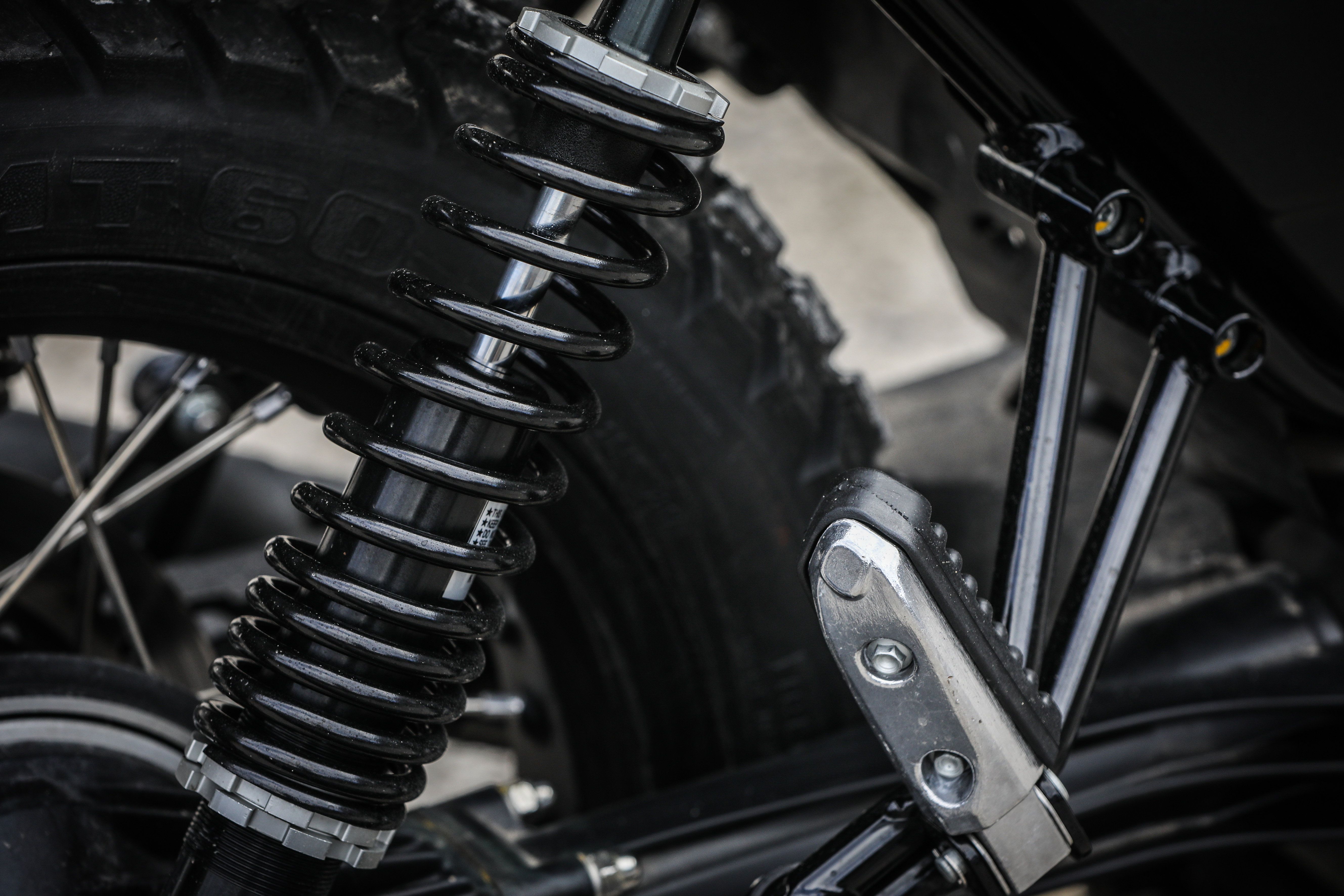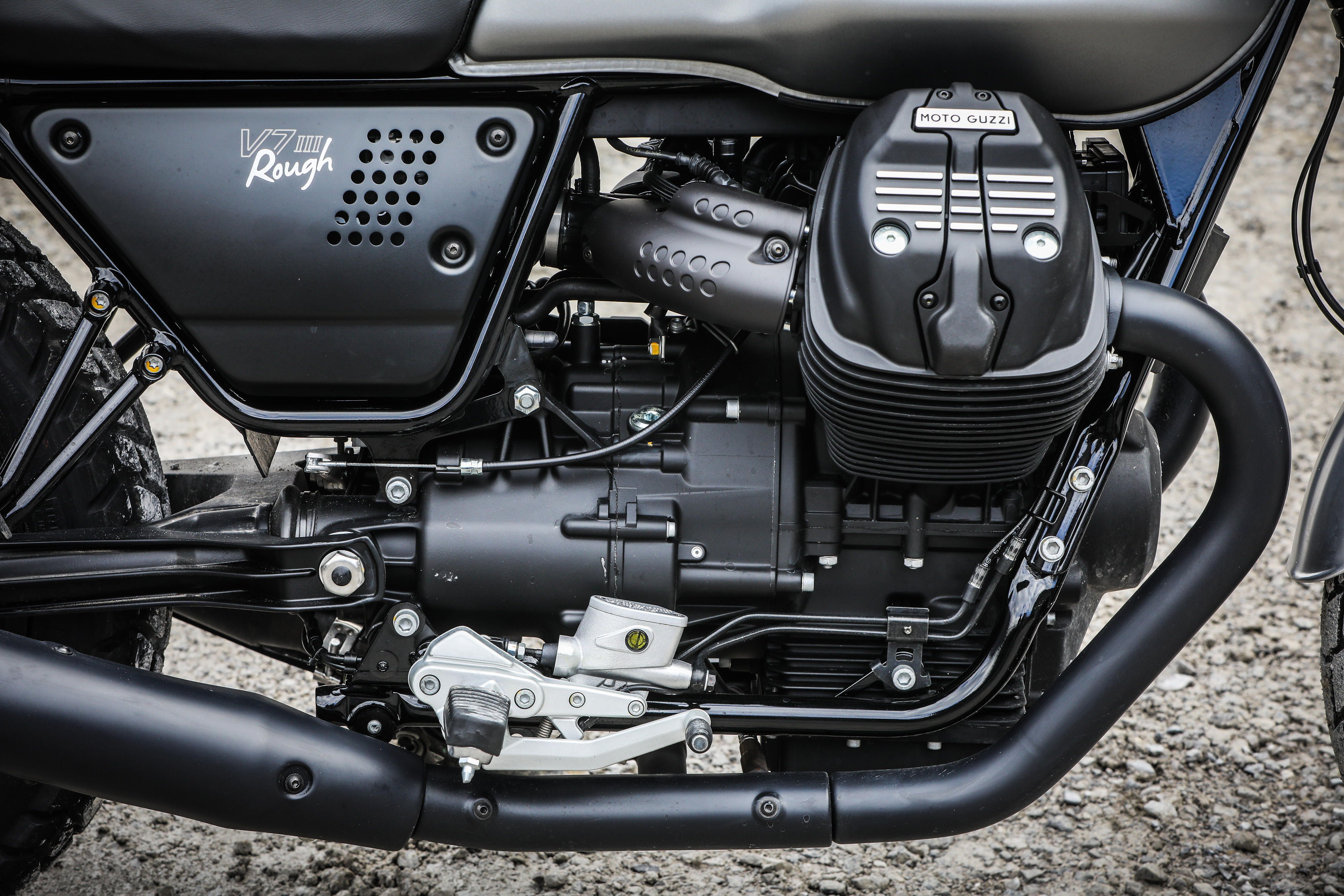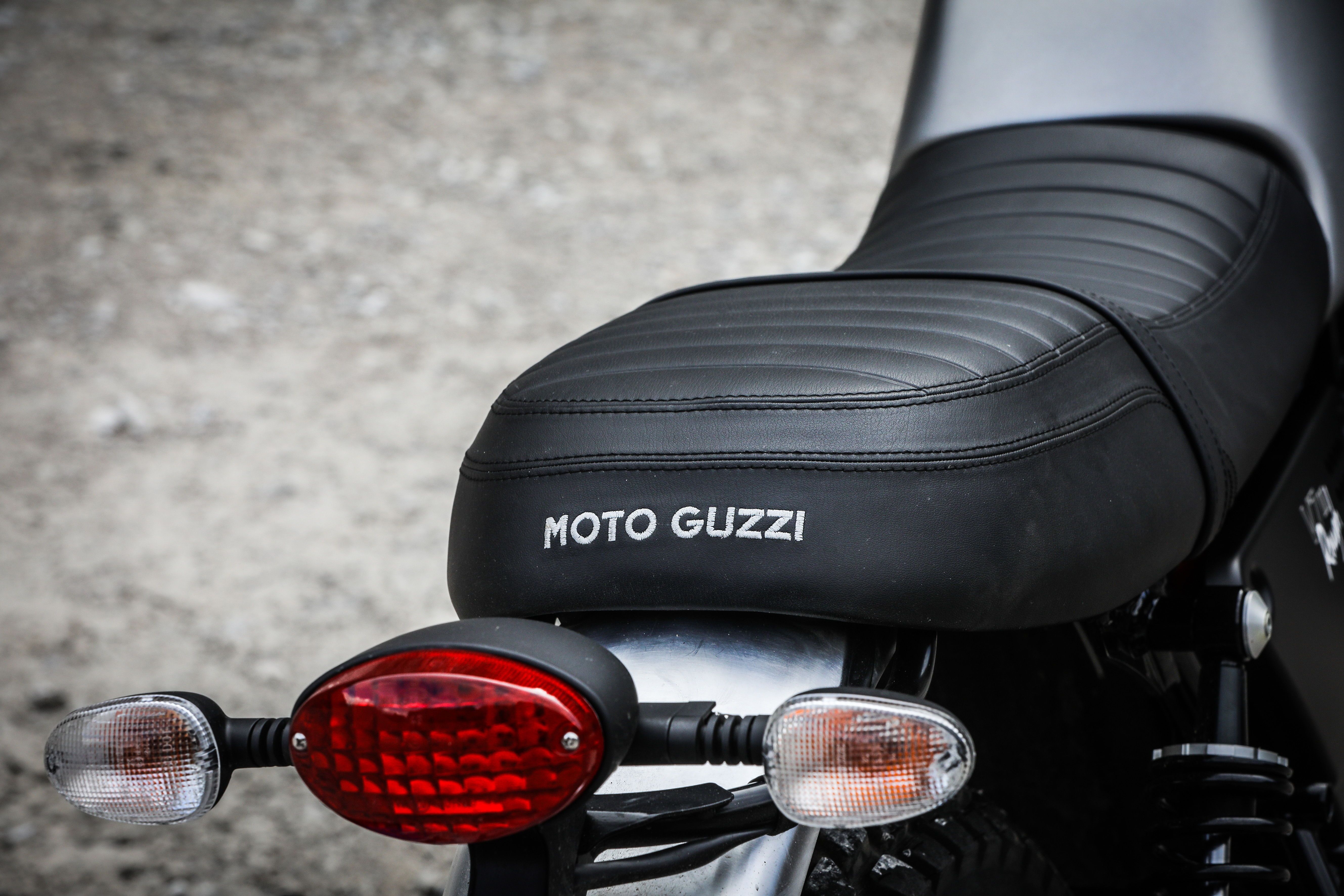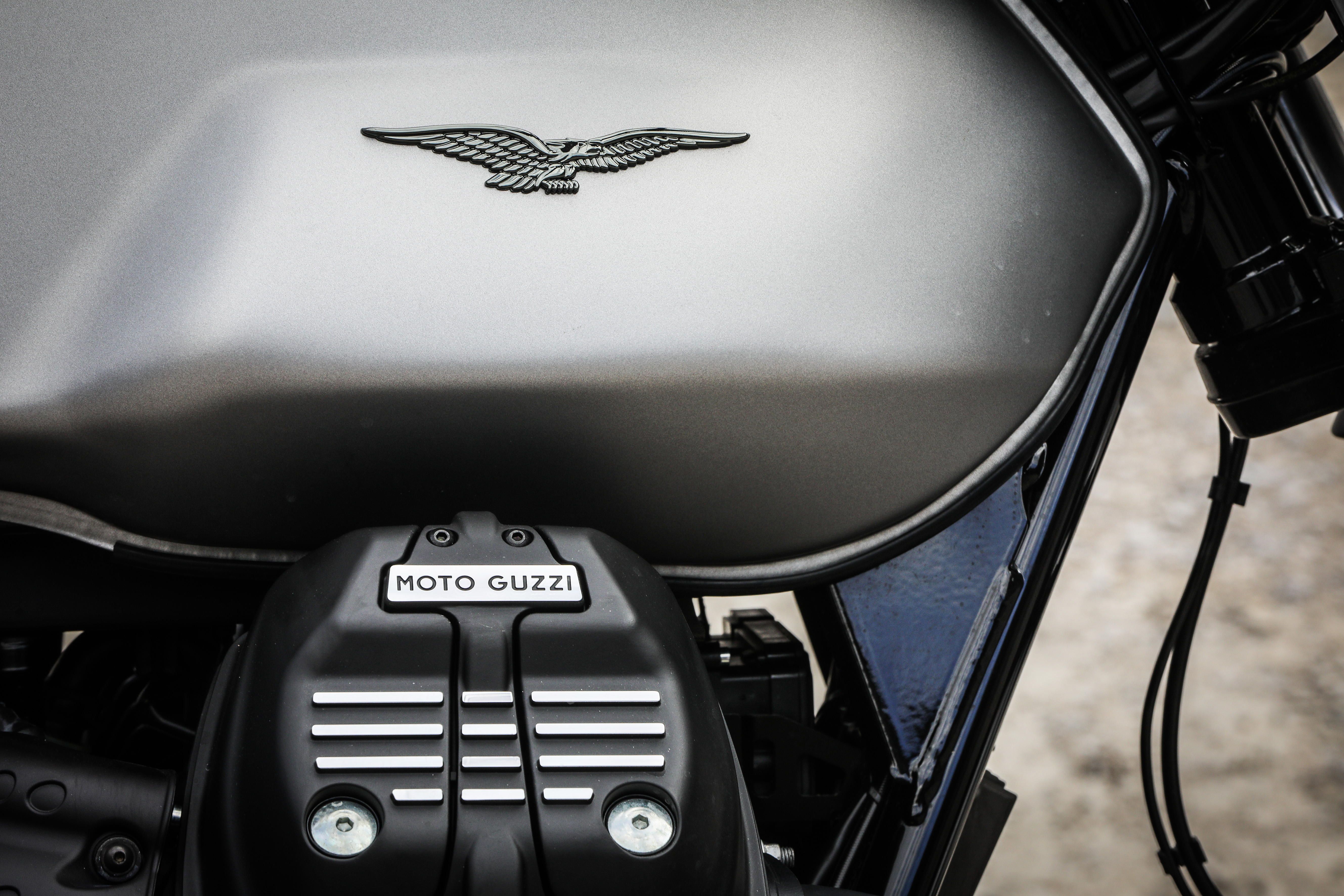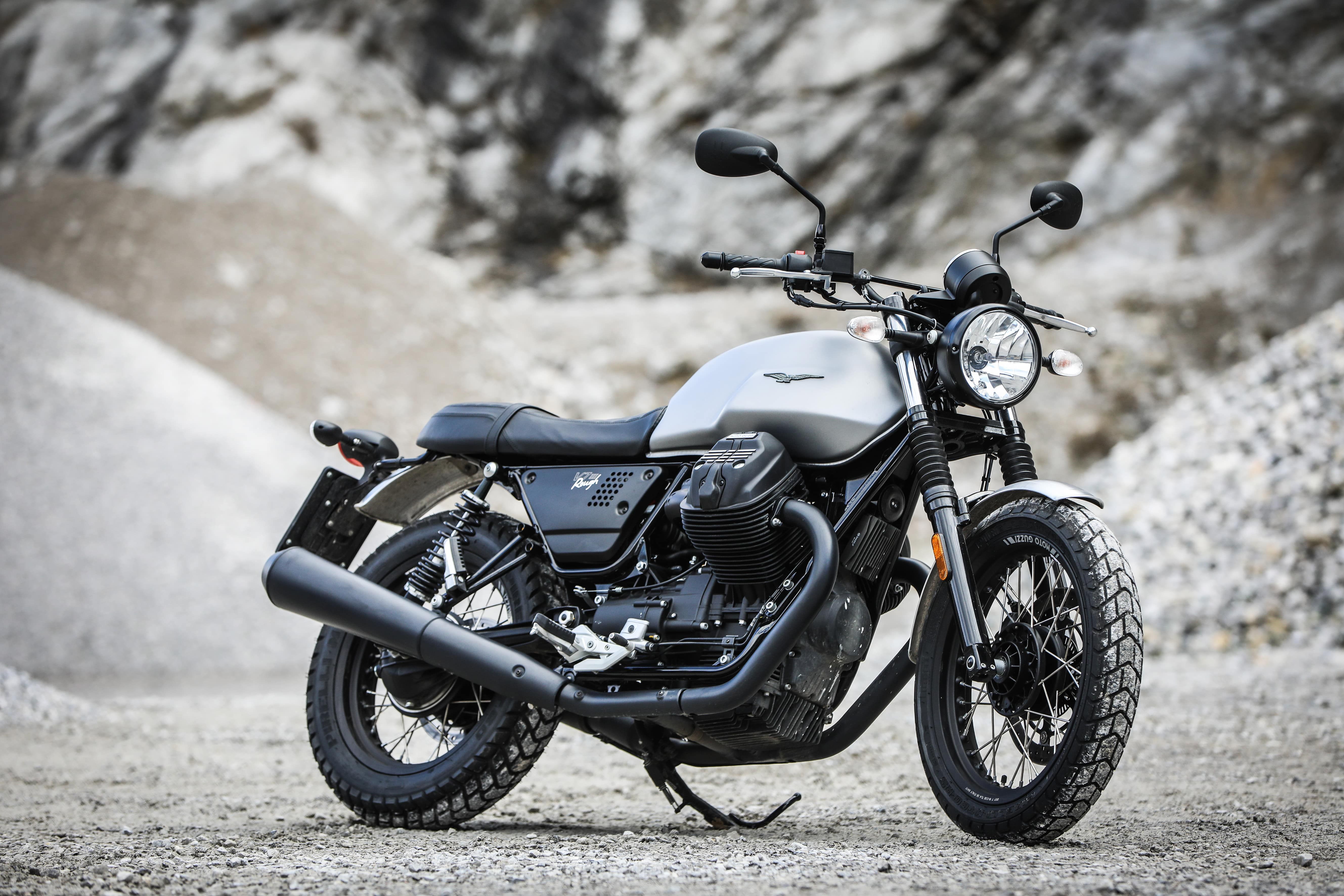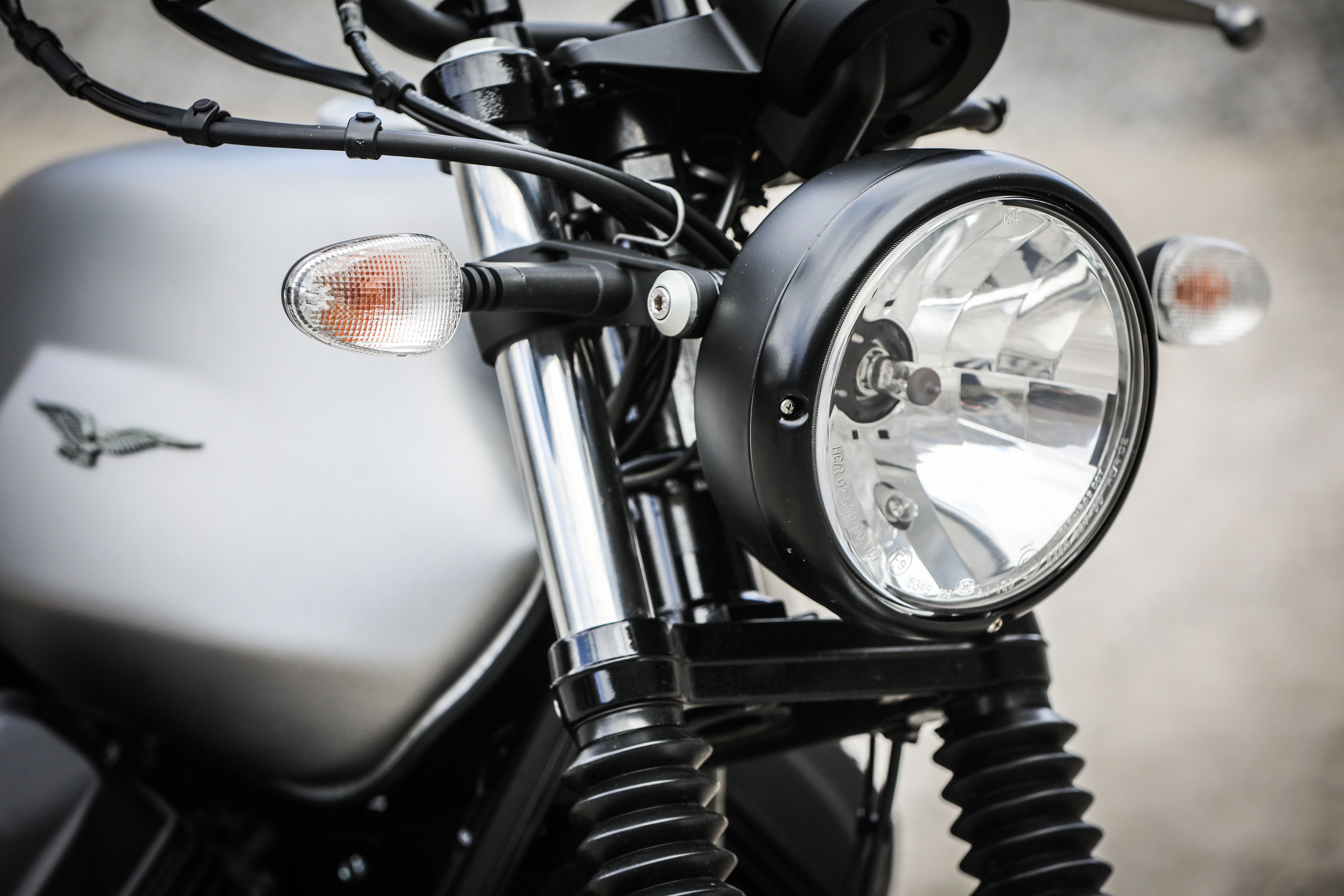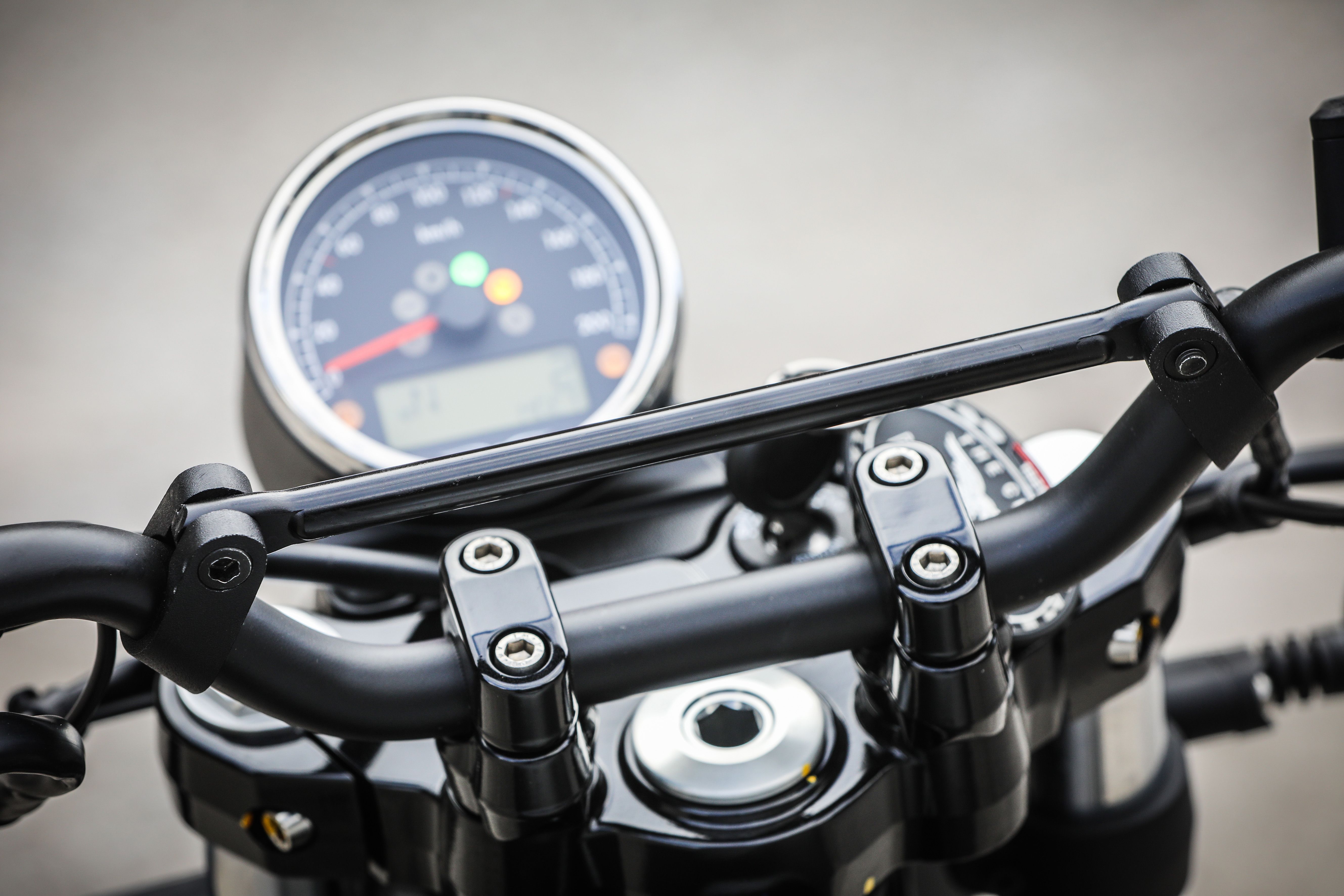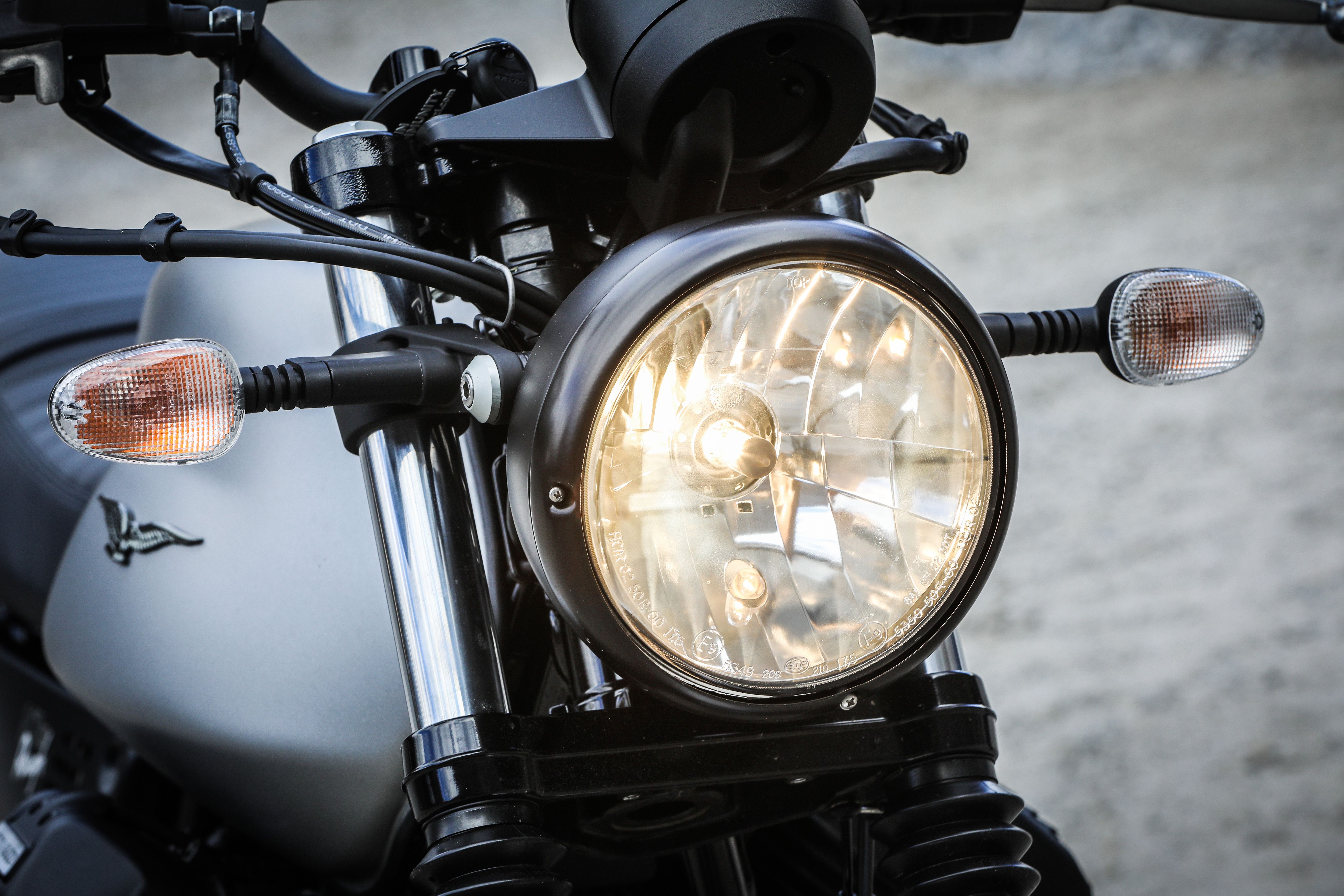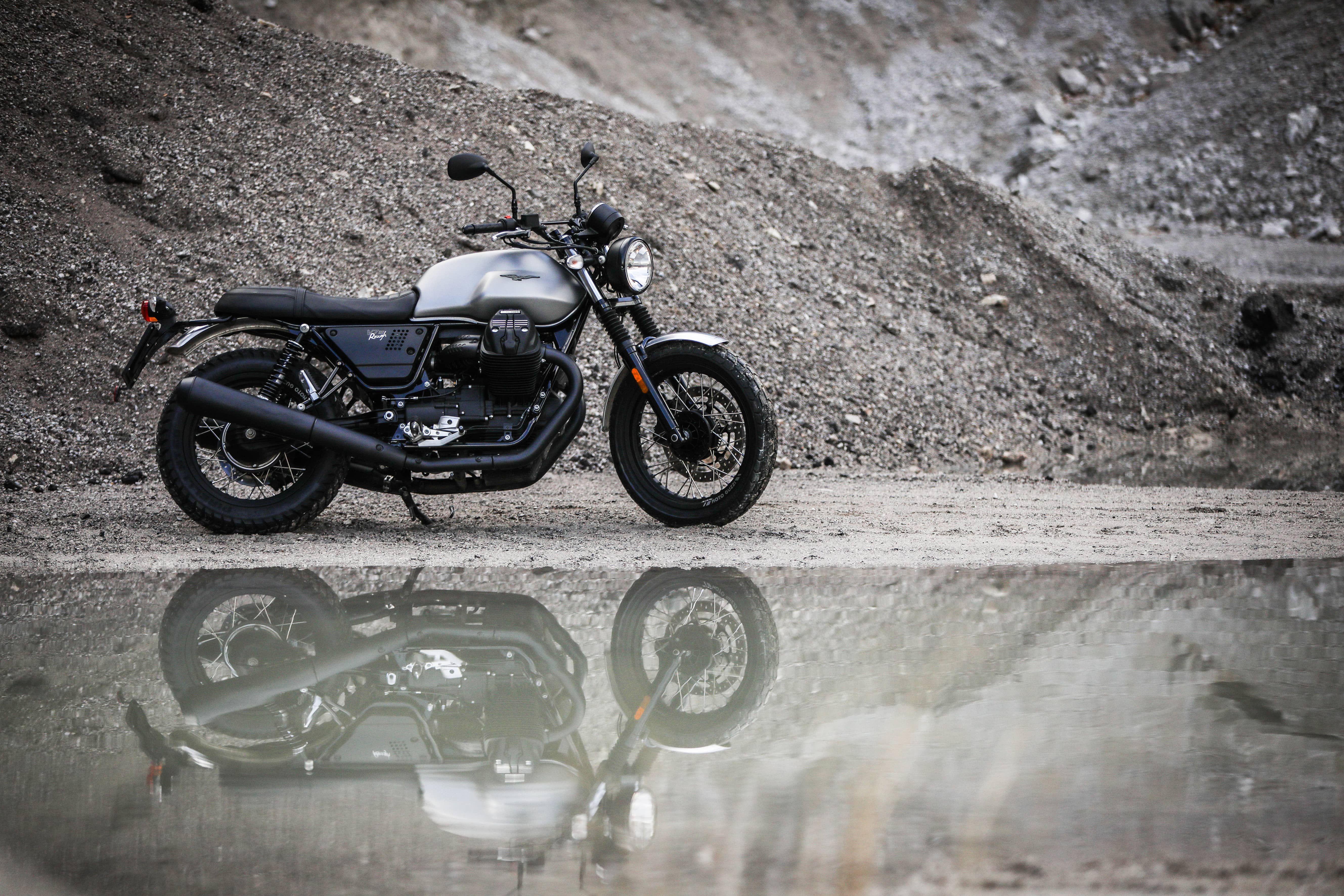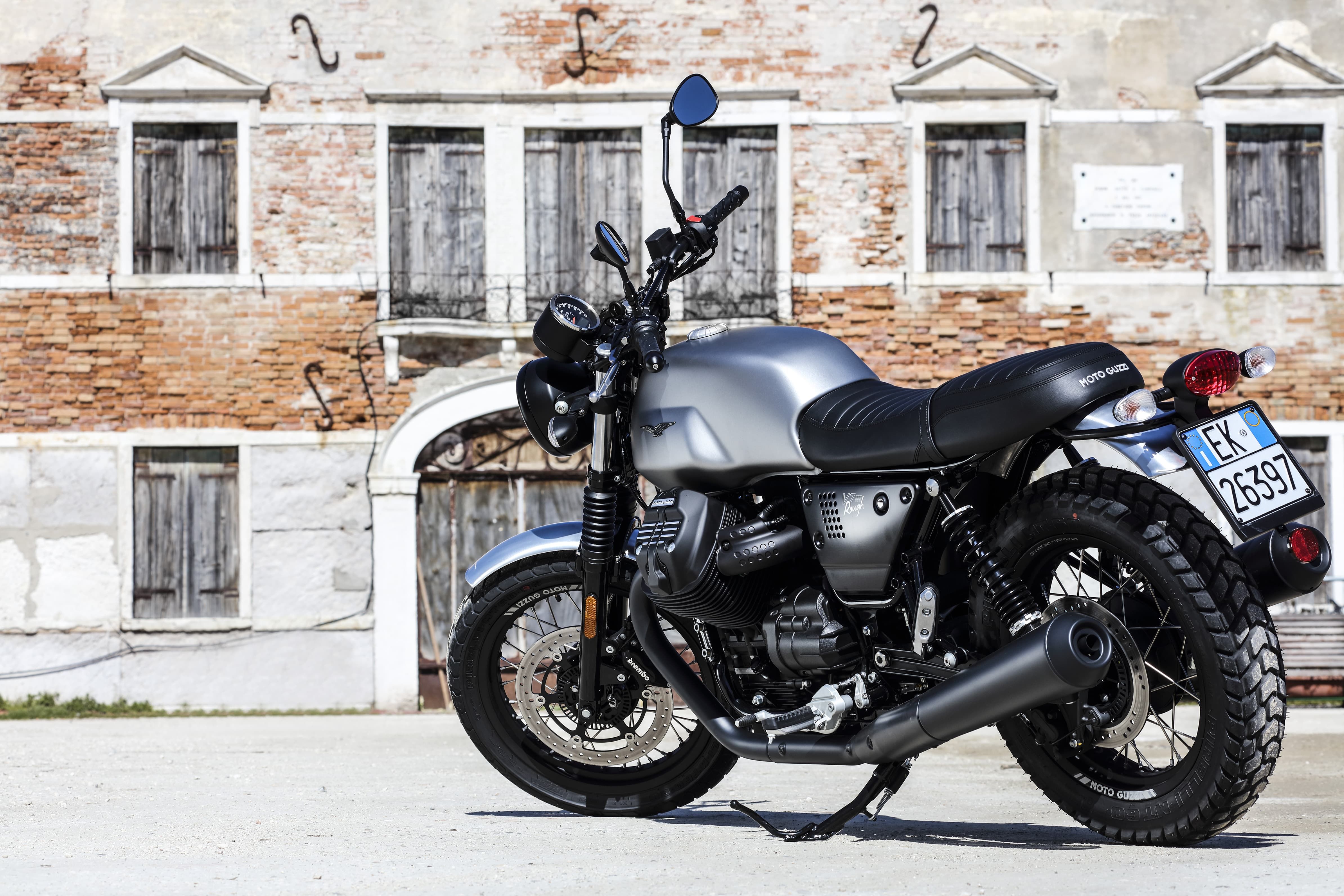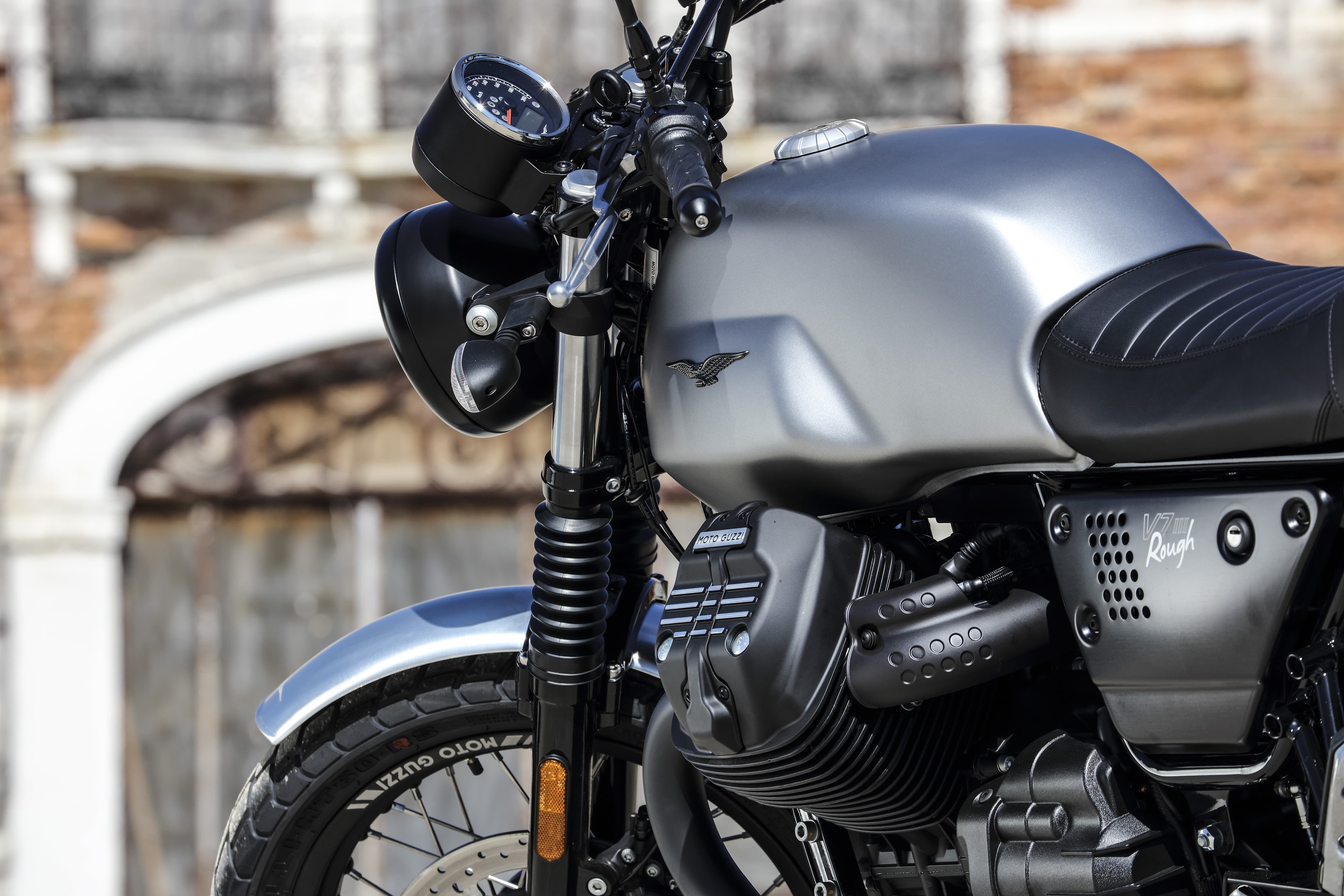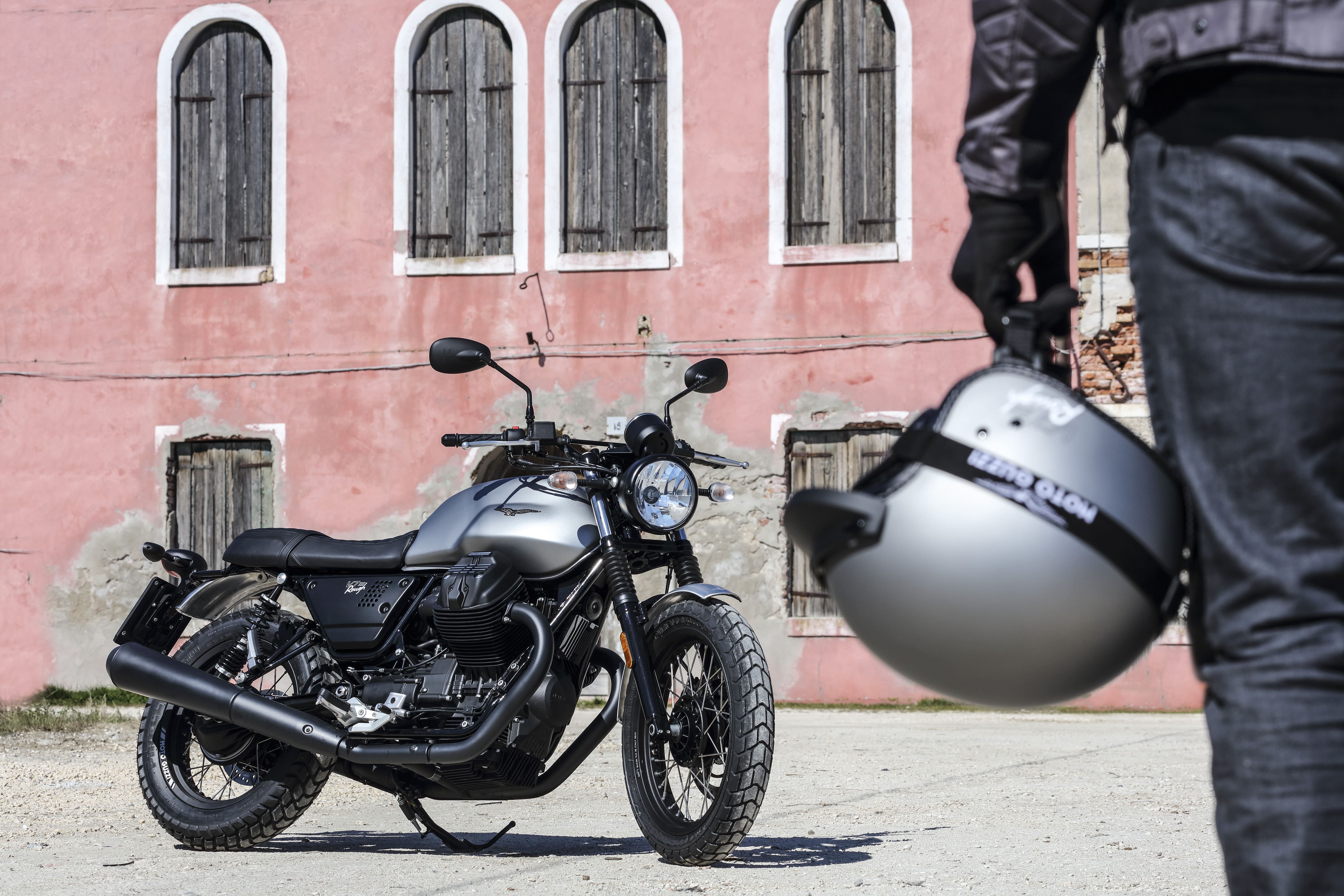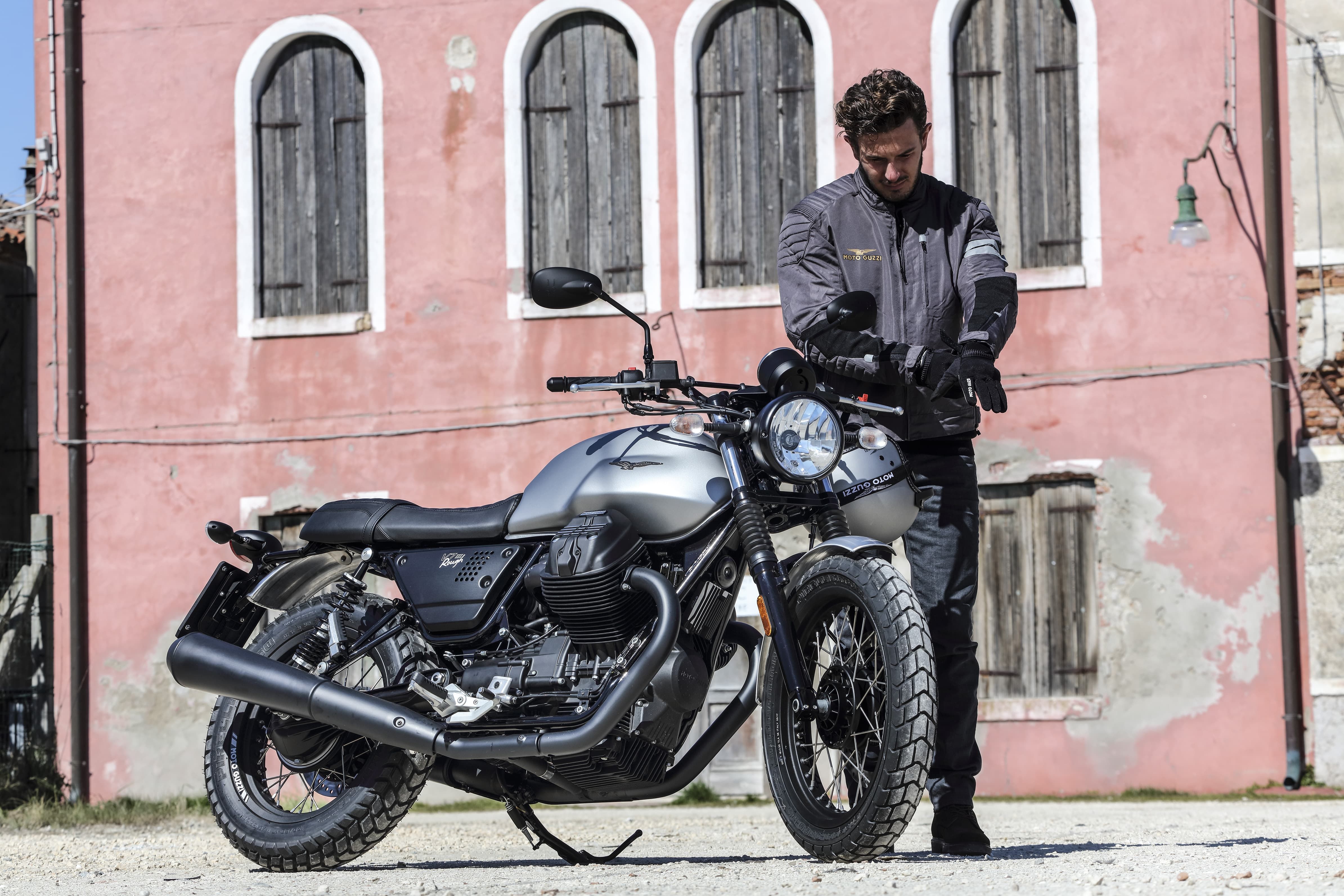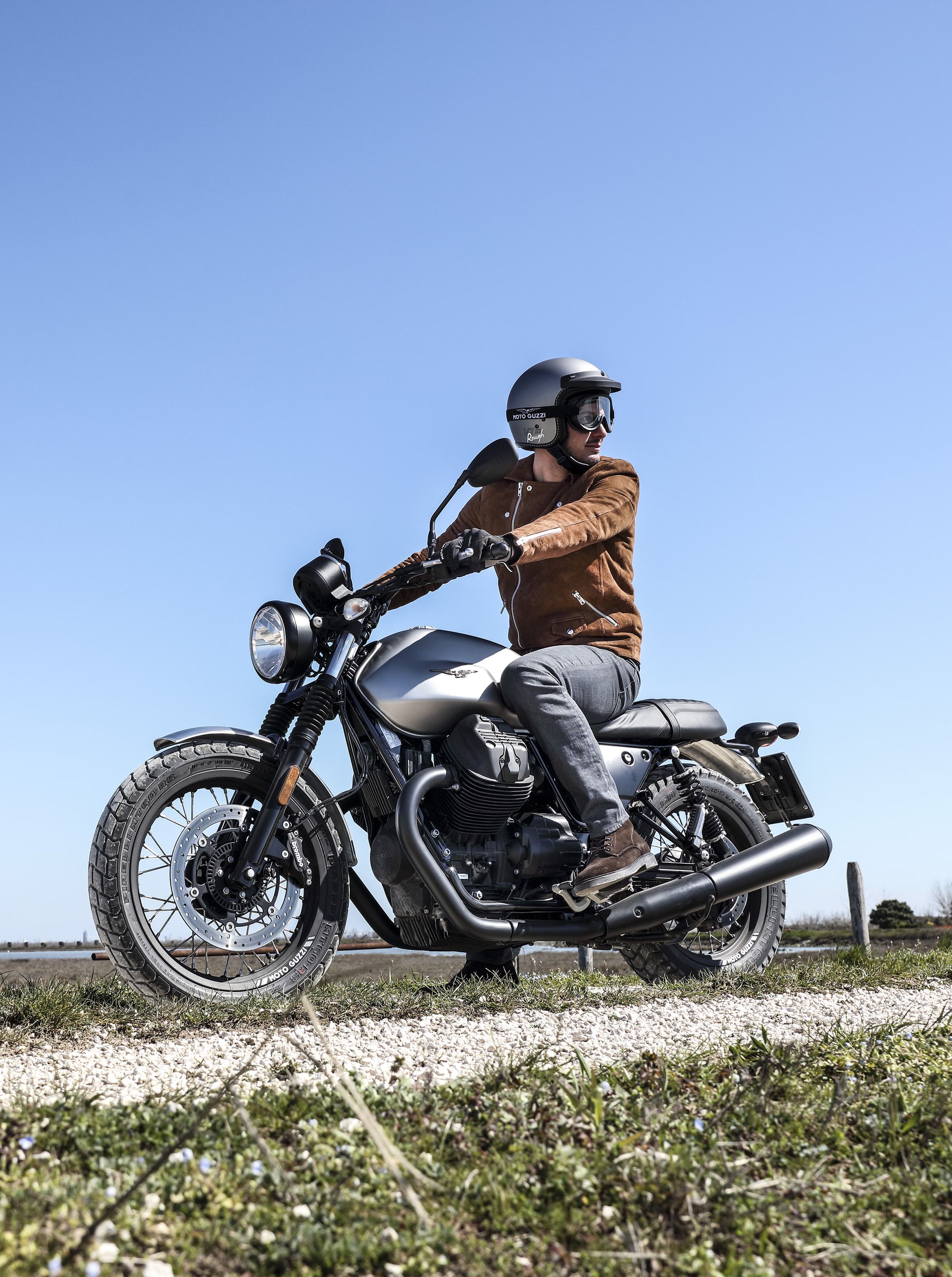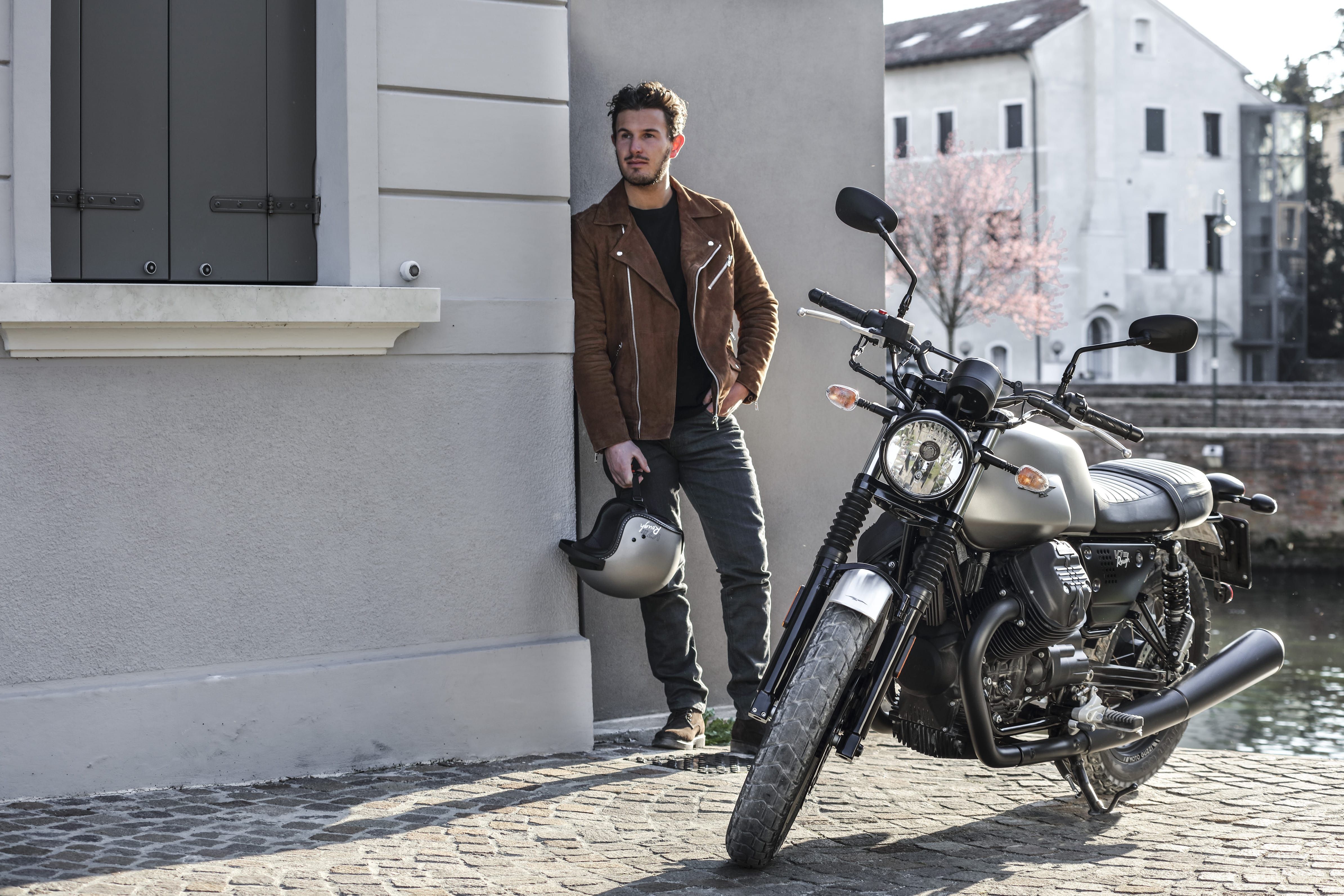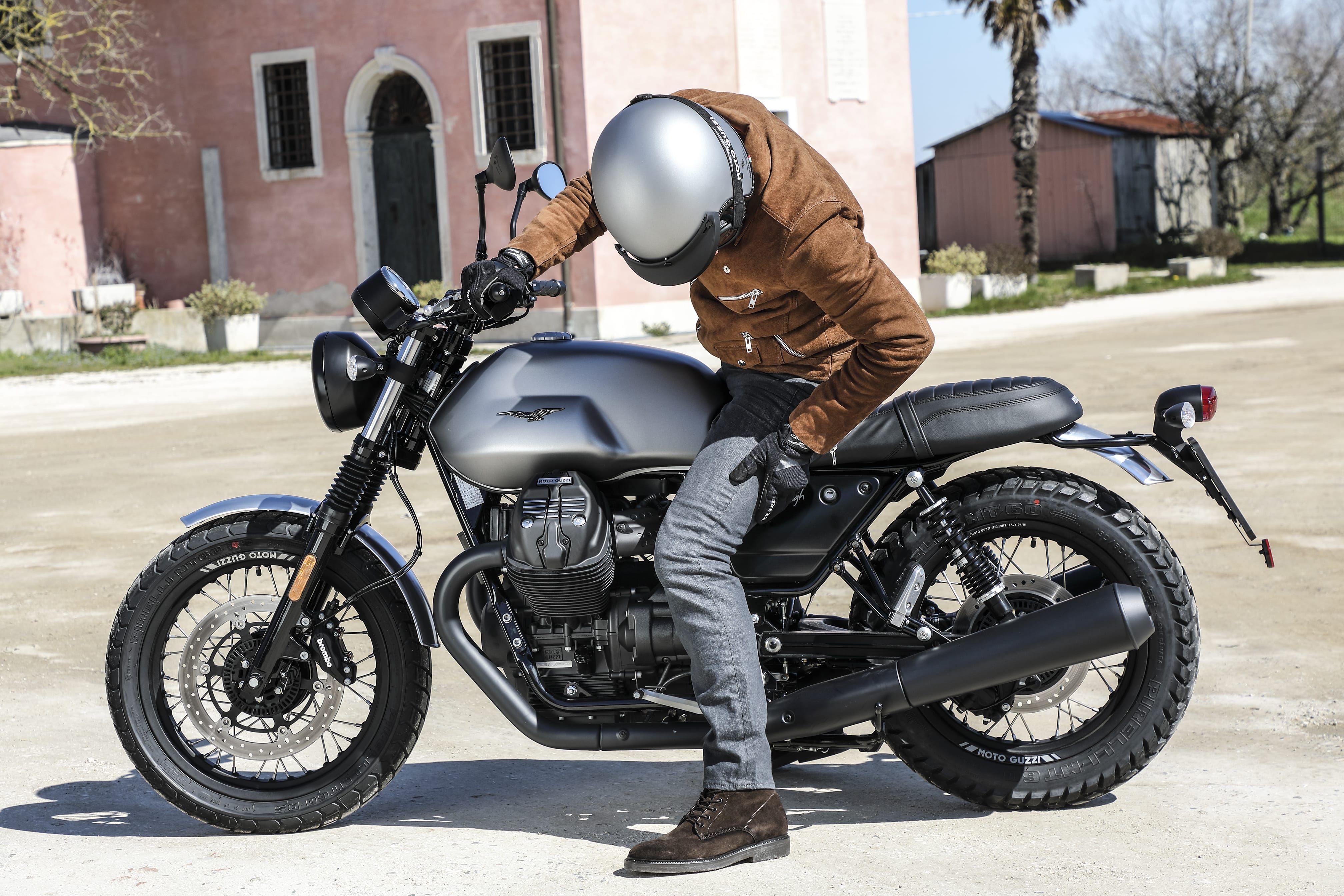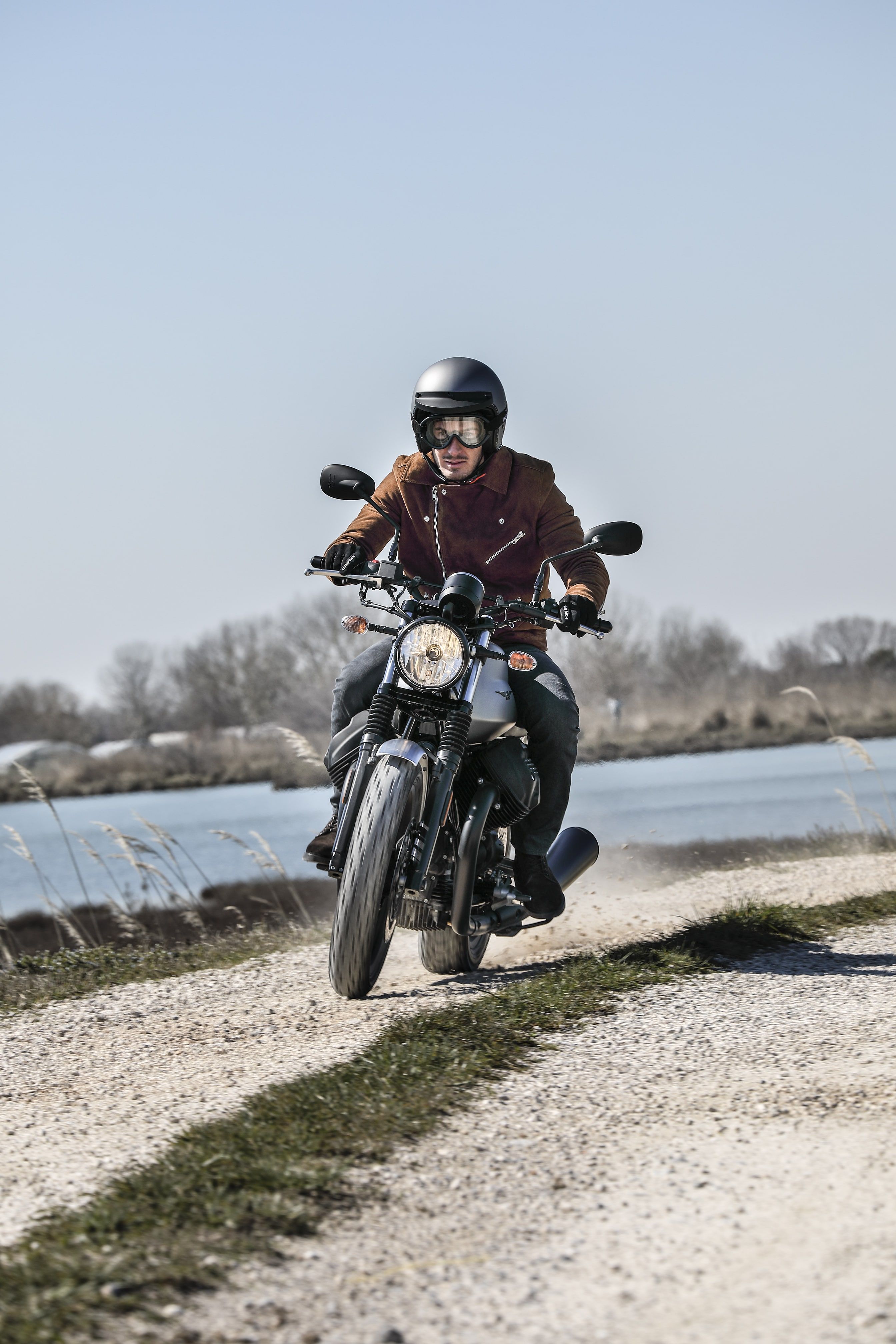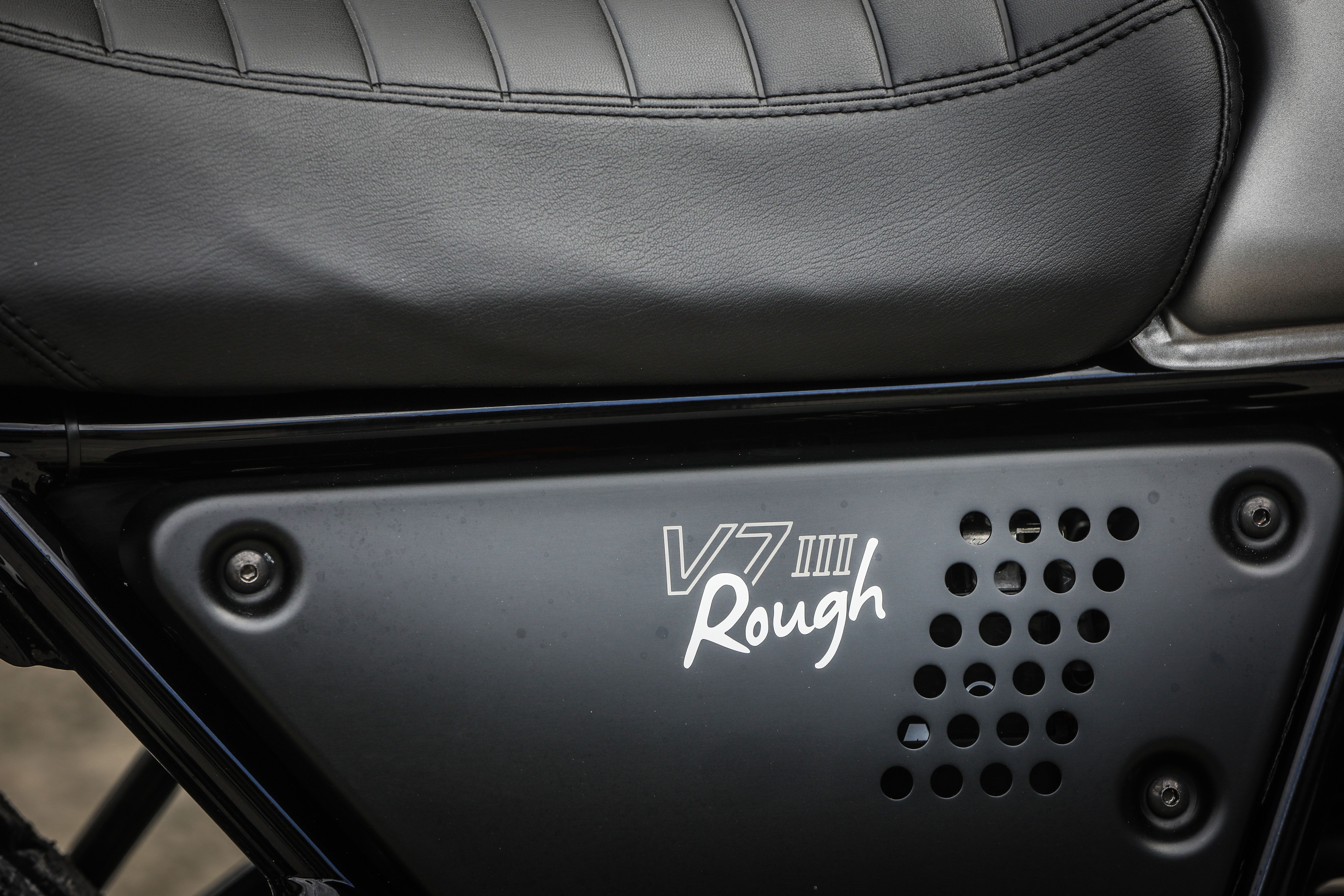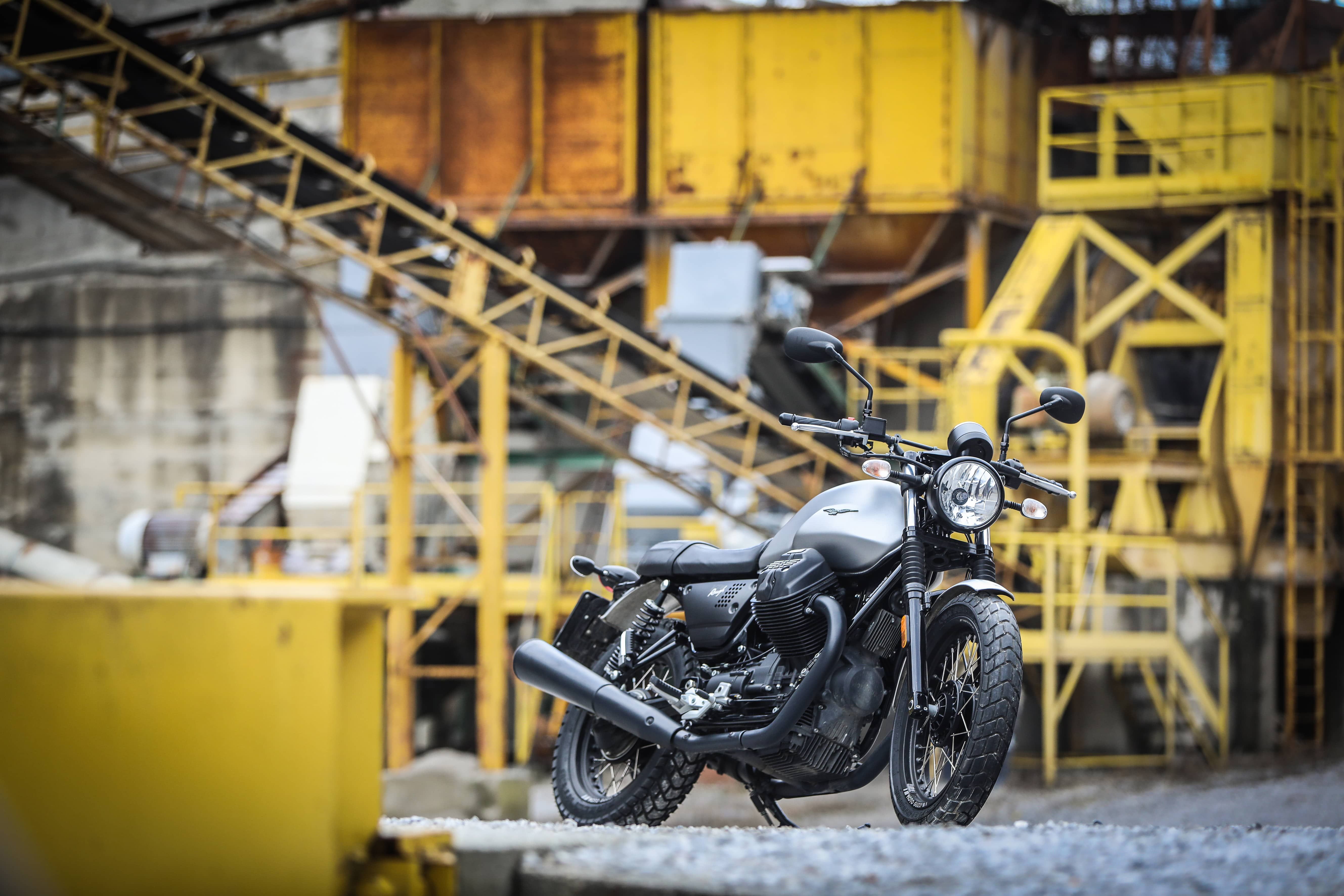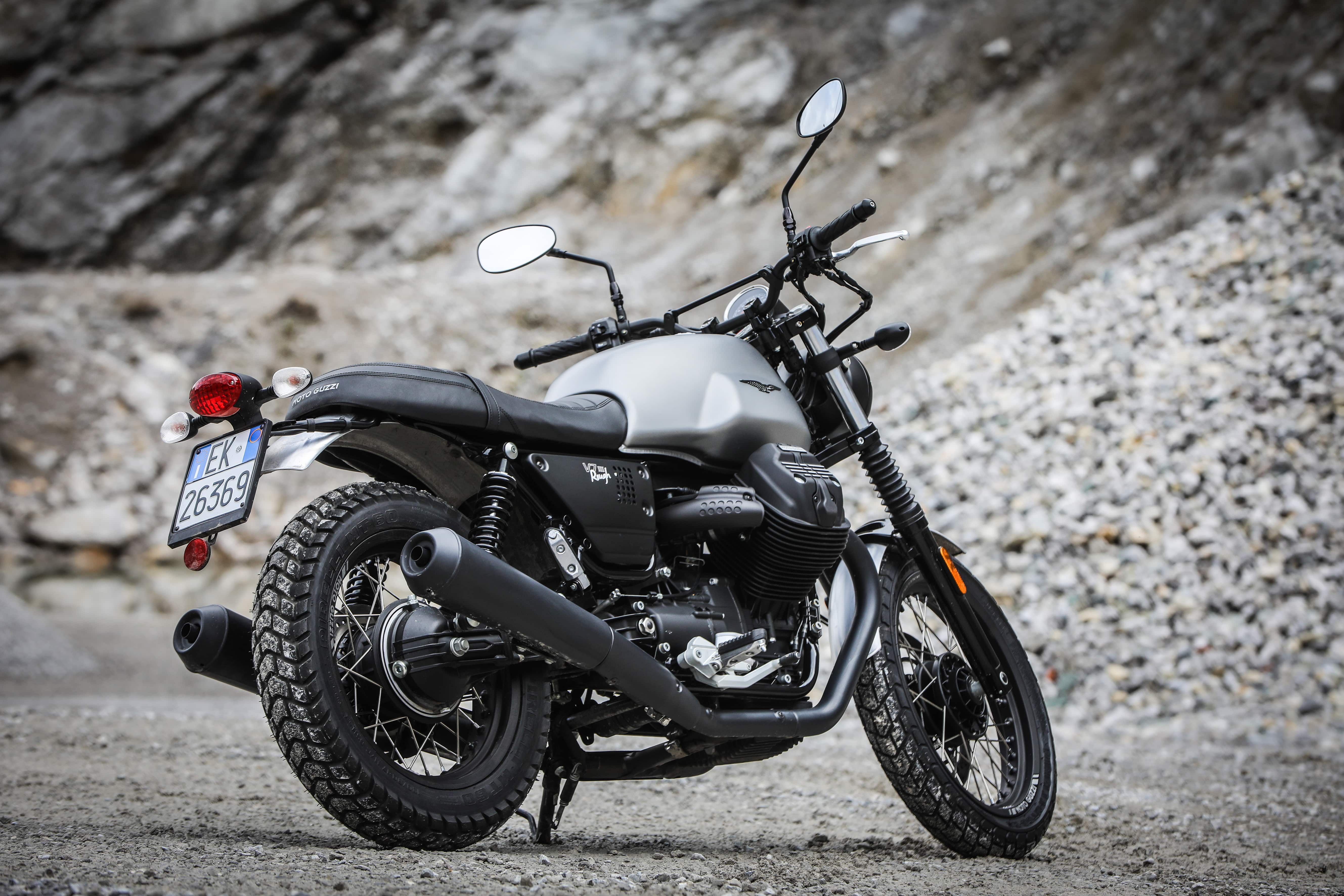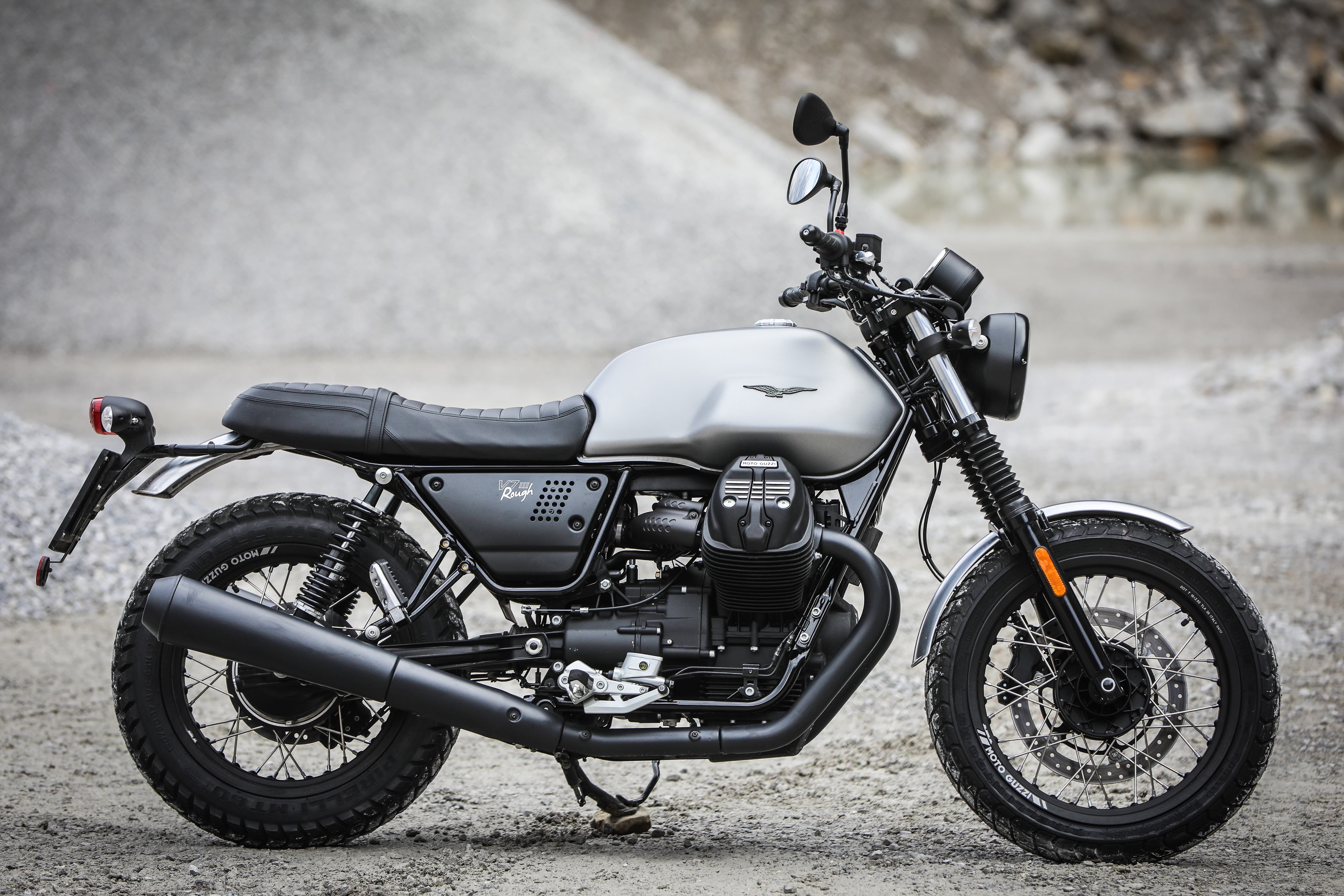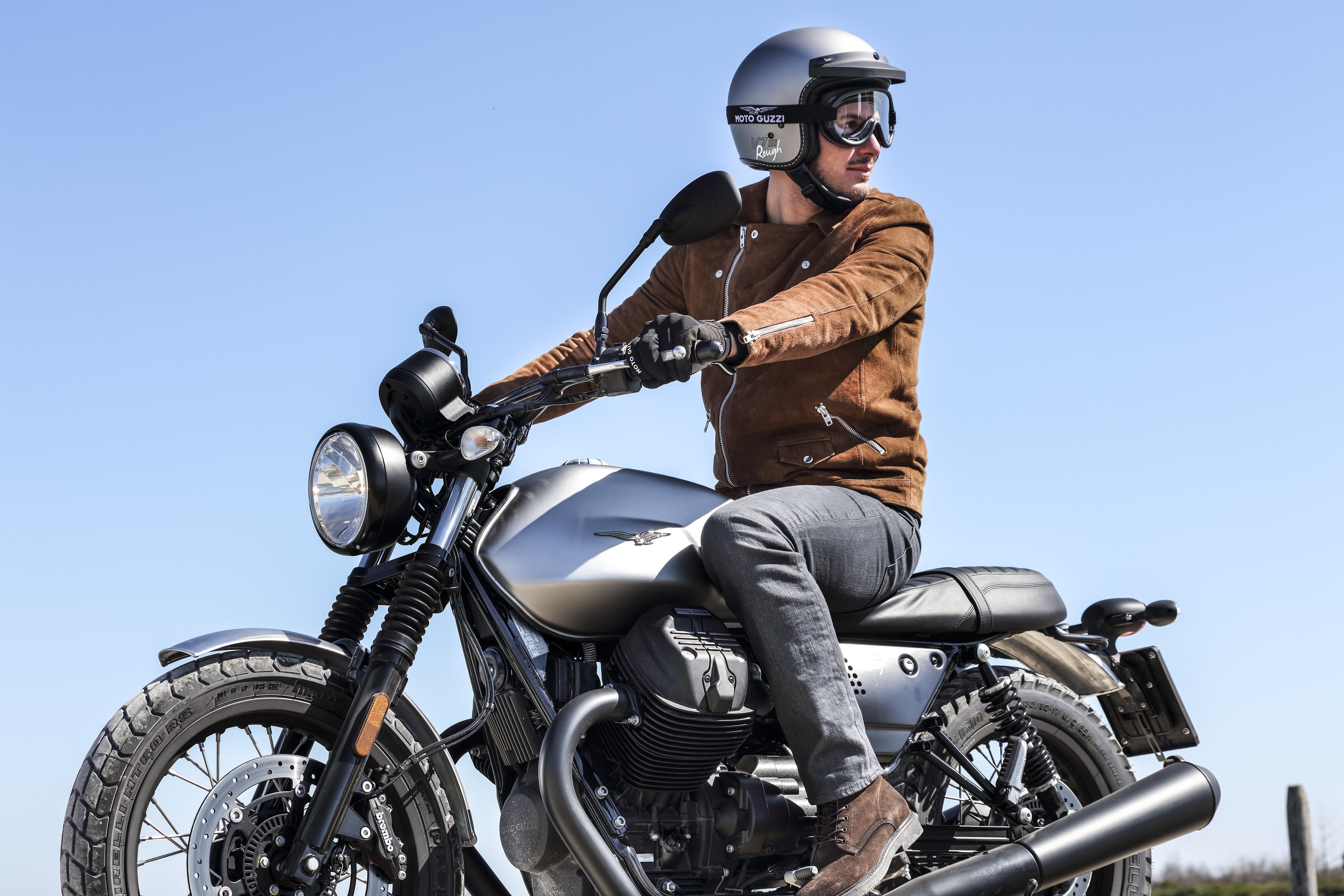Moto Guzzi expanded its V7 III footprint off the black and onto the brown with the new-in-2018 “Rough” variant. As its cleverly-ingenious name implies, this model comes set up to have some definite scramble-tastic tendencies with street-knobbies that perform as well on soft terrain as they do on the pavement. Like the rest of the family, power comes from a 744 cc V-twin that delivers 44 pound-feet of torque for solid holeshots and plenty of hill-conquering grunt. There's plenty of that characteristic MG style as well, courtesy of the sideways engine mount and fuel tank design. Best of all, the Rough beefs up its entry-level bike claim with ABS and traction control that can be turned off for a raw ride, or enabled for maximum stability.
2018 - 2020 Moto Guzzi V7 III Rough
- Make: Array
- Model: 2018 - 2020 Moto Guzzi V7 III Rough
- Engine/Motor: V-Twin
- [do not use] Vehicle Model: Array
Moto Guzzi V7 III Rough Design
Built in the spirit of the original scramblers, the V7 III Rough is essentially a standard motorcycle with some offroad-tastic features that turn the bike into the factory version of that classic, homemade dual-purpose ride. Blackout treatment at the fork sliders, exhaust, and various other points reinforce that homegrown connection. Laced wheels give the Rough both aesthetics and ability and that speaks well for its performance in less-than-civilized areas, because let's face it, there's a reason off-road bikes still run on wire spokes.
Gaiter bellows cover and protect the swept area of the fork tube to protect the seal from road grime and trail grit, plus, it helps tie the black fork sliders to the equally achromatic tripletree, headlight can, instrument housing, and handlebar. A voluminous fuel tank carries 5.6 gallons of fuel with the brand-typical bumpouts on each side that put a roof over the protruding heads. They also visually fair off the unusually placed engine while managing to leave a nice knee pocket for the pilot.
There is very little fall to the flyline over most of the tank, but the rear drops off precipitously to meet the seat that rides at 30.32 inches off the deck. The saddle itself is unique to the Rough, but it looks an awful lot like the faux tuck-and-roll bench seat used on the Special, just with the addition of a grab strap.
You can pencil me in as a fan of the rear lighting, particularly the oval taillight and blackout housings, but I lament the necessity of the plateholder that all but obscures the classic rear fender. Oh well, with the double exhaust setup, I reckon there's to be no side-mount tagholders for the Rough.
On the plus side, the mounting plate serves to extend the minimal protection afforded by the fender for the extra coverage needed to stay clean when you hit the trail/beach/whatever. Upswept exhausts add to the sporty look and suggests great cornering abilities that, in truth, will likely be limited by the dual-purpose tires and rider courage long before terrain strikes become a problem.
Moto Guzzi V7 III Rough Chassis
A double-downtube/double-cradle frame on the V7 II Rough has welded ALS-steel members for the main structure with a bolt-on subframe that allows for easy detachment. Well, it's easier than pulling out a cutting torch anyway. A yoke-style swingarm articulates the rear wheel with a pair of coil-over Kayaba shocks to tame the motion and little in the way of adjustability. The variable spring-preload represents the only ride-quality tweak offered to the rider.
Standard, right-way-up forks support the front end on 40 mm fork tubes that give up 5.11 inches of travel at the axle opposite 3.66 inches of travel out back, and while that's plenty for the streets, you'd best leave the supercross-style jumps to the purpose-built machines. The steering head comes set at 26.4 degrees with 4.17 inches of trail for handling that favors the agile end of the spectrum.
A single, 320 mm disc and four-piston Brembo caliper slows the front wheel with a twin-pot caliper to bite the 260 mm disc out back and switchable ABS on overwatch.
|
Frame: |
double cradle tubular frame in ALS steel with detachable elements. |
|
Trail: |
4.17 in (106 mm) |
|
Headstock angle: |
26.4° |
|
Front suspension/Travel: |
Ø 40 mm hydraulic telescopic fork/ 5.1 in (130 mm) |
|
Rear suspension/ Travel: |
Die cast light alloy swingarm with 2 shock absorbers with adjustable spring preload/ 3.7 in (93 mm) (3.1 in (80 mm) shock absorber stroke) |
|
Front Brake: |
Ø 320 mm stainless steel floating discs, Brembo calipers with 4 differently sized opposed pistons |
|
Rear brake: |
Ø 260 mm, stainless steel disc, floating caliper with 2 pistons |
|
Front wheel: |
18" in lightweight alloy 100/90 (110/80 R18 as alternative) |
|
Rear wheel: |
17" in lightweight alloy 130/80 |
Moto Guzzi V7 III Rough Drivetrain
Impossible to miss, the transverse-mount V-twin makes the V7 III Rough instantly recognizable as a 'Guzzi. I admit I'm not a fan of any arrangement that leaves the engine vulnerable as this, but I have to concede two points; it does look cool, and placing the jugs into the slipstream provides cooling that you don't get from a fore-and-aft arrangement that comes all tucked away under the tank.
The bores measure out at 80 mm with a 74 mm stroke for a total displacement of 744 cc. A good old-fashioned pushrod-and-rocker system times the two-valve heads. Some people might find that to be a detriment, but I would point out that the alternatives would make the rocker-box areas even larger, and I think we can all agree that limiting the amount of engine that sticks out each side is probably a good thing.
A catalytic converter, Lambda probes, and auxiliary air injection ensure that the mill meets Euro4 emission standards, but its the electronics that steal the show here. First off, the factory chucks on its proprietary traction control system that provides two levels of intervention -- one for ideal conditions and one for inclement weather -- plus, it can be turned off altogether if you'd rather have that full raw feeling. As usual with V-twins, the Rough's mill is fairly grunty with 44 pound-feet of torque on tap, backed up by a respectable 52 horsepower. Not only will this give you great power out of the hole, but it also pulls a hill like a boss.
|
Engine: |
90° V-Twin, 4-stroke, 2 valves with light alloy pushrods and rockers |
|
Displacement: |
744 cc |
|
Bore x Stroke: |
80 mm x 74 mm |
|
Max Power: |
52 hp (38 kW) at 6,200 rpm |
|
Maximum torque at crankshaft: |
44.2 lb-ft (60 Nm) at 4,900 rpm |
|
Exhaust system: |
3-way catalytic converter with double lambda probe |
|
Cooling: |
Air |
Moto Guzzi V7 III Rough Price
Pricing is reasonable to most at $9,190, but it pushes what we consider as appropriate for the entry level beyond the established norm. Also, it comes in only one color; a “Grey Matt” hue that is about as exciting as the leaden winter sky it resembles. Seriously guys, I'd expect something a little less funereal for a ride as whimsical as this.
|
Color: |
Grey Matt |
|
Price: |
$9,190 |
Moto Guzzi V7 III Rough Competitors
It seemed only fair to go with another scramble-tastic Italian ride for the head-to-head, and Ducati's Scrambler “Desert Sled” seems like a natural pairing. First off, the looks of the Scrambler leave a much different impression as far as off-road capabilities are concerned. Inverted, 46 mm front forks and a tripletree-mount front fender speak to greater terrain tolerance, and that isn't just for show as the 7.9-inch wheel travel at both ends proves. Folks, this is real off-road metrics here, not streetbike-convert numbers, and it kinda' makes the Rough look a bit like a soccer-mom's SUV as far as actual ability goes.
Ducati doubles down on the pain with fully adjustable front forks that give a level of ride-quality control that MG just can't match. Oh yeah, and the wire cage on the Duc's cyclops headlight looks like serious business; whether it actually provides much protection or not is debatable. Ducati gets a slight edge in brake size with a 330 mm disc up front, and since it also comes with ABS, that 10 mm advantage is all ya' get.
The Scrambler also has an air-cooled V-twin to power their entry, but arrange it fore-and-aft where it rides somewhat ensconced and protected within the Trellis frame. The Desert Sled mill packs in a few extra cubes with a total of 803 cc against the 744 cc MG plant, but the power difference goes far beyond what a handful of centimeters can explain away. Ducati claims a total of 73 horsepower and 49 pounds o' grunt for a vastly superior output to the 'Guzzi. If anything can save the Rough here, it's the price tag. While MG admittedly pushes the entry-level envelope with its $9,190 sticker, Ducati blows right past that with an $11,995 tag that will shock most first-time buyers just a bit, at the very least.
He Said
“Ducati might have the power, but the classic, homegrown scrambler style you get from the Rough is hard to beat. Sure, the price helps, but the Rough really looks like the genuine article with its clear street foundation and custom trim to make it perform off-road as well. Still not a fan of the engine arrangement, but I guess you can't argue with success.”
She Said
My wife and fellow motorcycle writer, Allyn Hinton, says, “While there are plenty to choose from, price-wise, I might have gone with the Ducati Scrambler Sixty2 or the Icon. I can't speak to the Rough yet, but I'm digging the V7 III line in general. Overall, the V7 III is a big improvement over the V7 II line, and while some of the V7s are more road oriented, the Rough is more off-road capable, so more scrambler-esque than some of its stablemates.”
Moto Guzzi V7 III Rough Specifications
|Engine & Drivetrain:||
|
Engine: |
90° V-Twin, 4-stroke, 2 valves with light alloy pushrods and rockers |
|
Displacement: |
744 cc |
|
Bore x Stroke: |
80 mm x 74 mm |
|
Max Power: |
52 hp (38 kW) at 6,200 rpm |
|
Maximum torque at crankshaft: |
44.2 lb-ft (60 Nm) at 4,900 rpm |
|
Exhaust system: |
3-way catalytic converter with double lambda probe |
|
Cooling: |
Air |
|Transmission:| 6 speed|
|Chassis:||
|Frame:|double cradle tubular frame in ALS steel with detachable elements.|
|Trail:|4.17 in (106 mm)|
|Headstock angle:| 26.4° |
|Front suspension/Travel:| Ø 40 mm hydraulic telescopic fork/ 5.1 in (130 mm) |
|Rear suspension/ Travel:| Die cast light alloy swingarm with 2 shock absorbers with adjustable spring preload/ 3.7 in (93 mm) (3.1 in (80 mm) shock absorber stroke) |
|Front Brake:| Ø 320 mm stainless steel floating disc, Brembo caliper with 4 differentiated and opposed pistons, ABS |
|Rear brake:| Ø 260 mm, stainless steel disc, 2-piston floating caliper, ABS |
|Front wheel:| 18" spoked 100/90 (110/80 R18 as alternative) |
|Rear wheel:| 17" spoked 130/80 |
|Dimensions & Capacities:||
|Wheelbase:|56.89 in (1445 mm) |
|Saddle height:| 30.32 in (770 mm)|
|Length:|86 in (2,185 mm)|
|Height:|43.4 in (1,100 mm)|
|Minimum ground clearance:| 5.9 in (150 mm) |
|Fuel tank capacity:| 5.6 gal (including 1 gal reserve) |
|Dry weight:| 425.5 lb (193 kg) |
|Curb weight:| 470 lb (213 kg)|
|Top Speed:| 110 mph (est)|
|Details:||
|Color:|Grey Matt|
|Price:|$9,190|
Further Reading
Ducati Scrambler Desert Sled
See our review of the Ducati Scrambler Desert Sled.
Moto Guzzi V7 III Special
See our review of the Moto Guzzi V7 III Special.
Ducati Scrambler Icon
See our review of the Ducati Scrambler Icon.
Ducati Scrambler Sixty2
See our review of the Ducati Scrambler Sixty2.
Moto Guzzi
Read more Moto Guzzi news.


